-
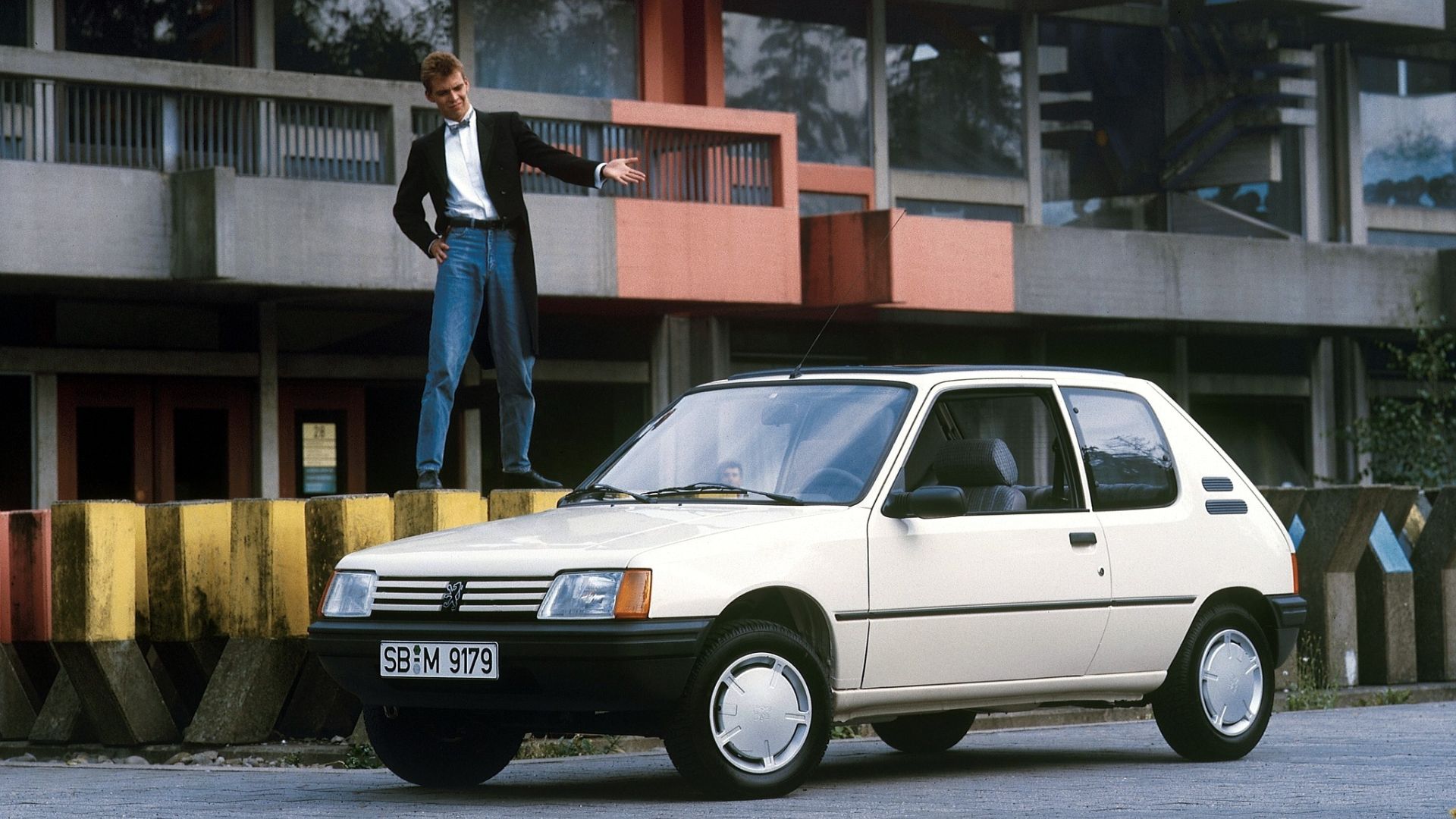
Life begins at 205
© PeugeotHard to believe, we know, but the Peugeot 205 is entering middle age. Now 40 years old, this little French hatchback was one of the greatest cars of the 1980s. From the 954cc Junior to the iconic GTI – via the pretty CTI cabriolet, mid-engined T16 rally car and others – the 205 was always a bit special. Peugeot has struggled to recapture its magic ever since.
-
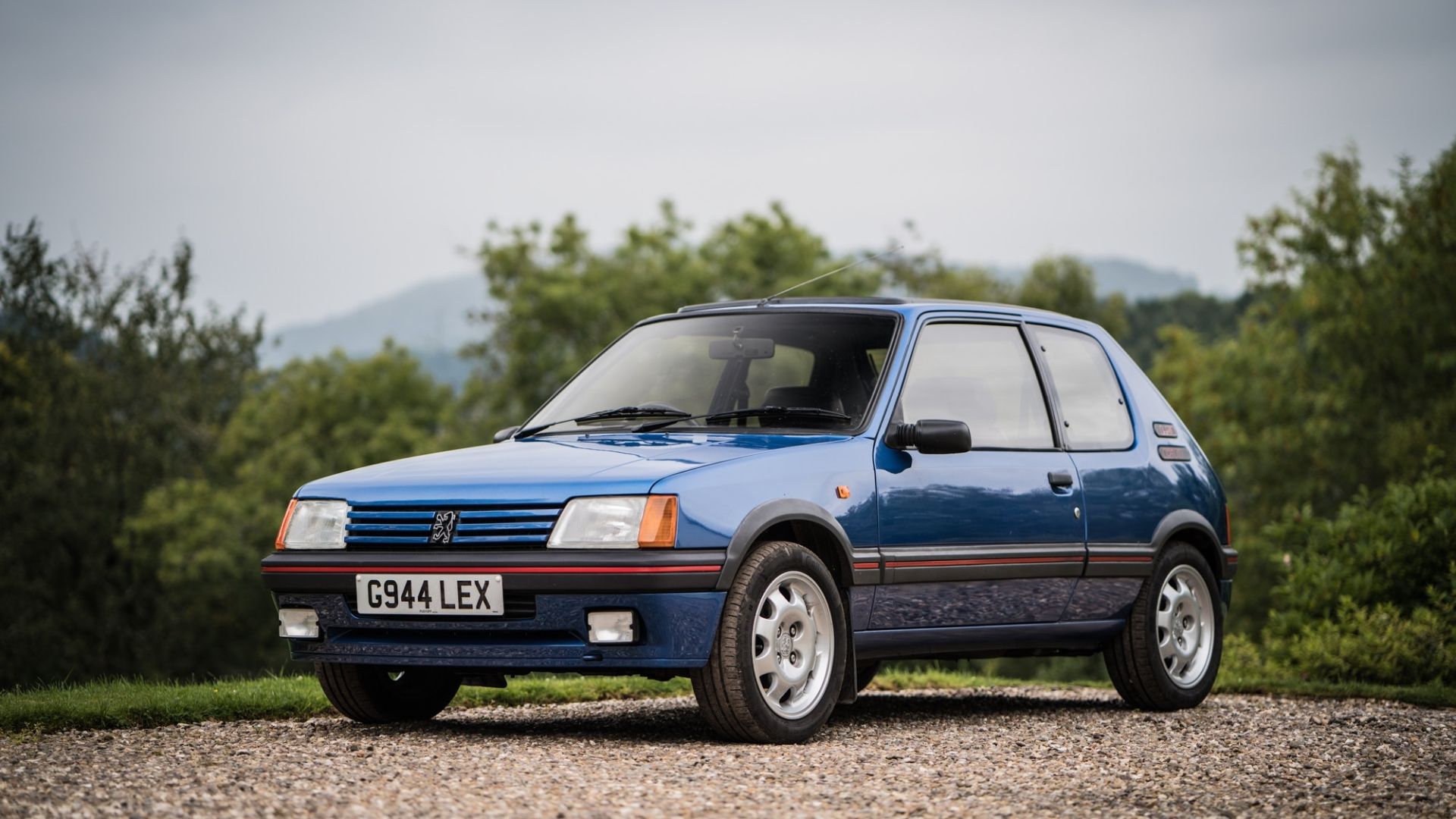
A hot hatch to beat them all
© PeugeotYou already know about the 205 GTI. Even today, it’s the hot hatchback against which all others are judged; fragile, yes – but also zesty, fast and utterly life-affirming to drive. Whether you chose the 1.6-litre engine or the punchier 1.9 version seen here, the 205’s sub-1,000kg weight and nimble handling meant it could lay waste to many ‘proper’ sports cars.
-
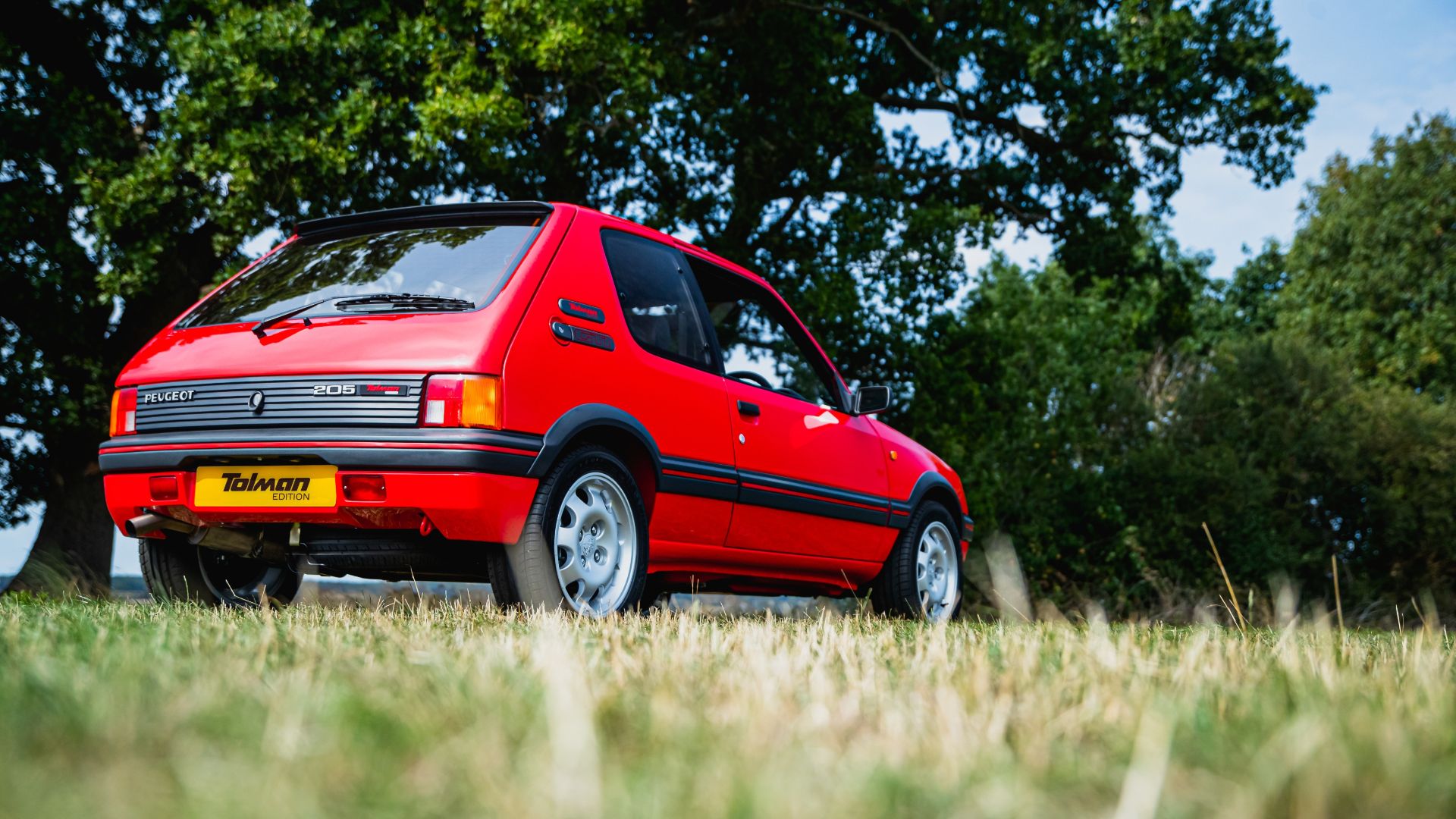
The legend lives on
© TolmanToday, the 205 GTI is a fully fledged modern classic, and a really nice example will cost you at least £15,000. Alternatively, you could opt for Tolman Motorsport’s beautifully enhanced restomod – as seen on Top Gear – for upwards of £45,000. We drove the 205 Tolman Edition last year, saying: ‘It feels like a GTI after a few months at the gym: fitter and more focused’.
-
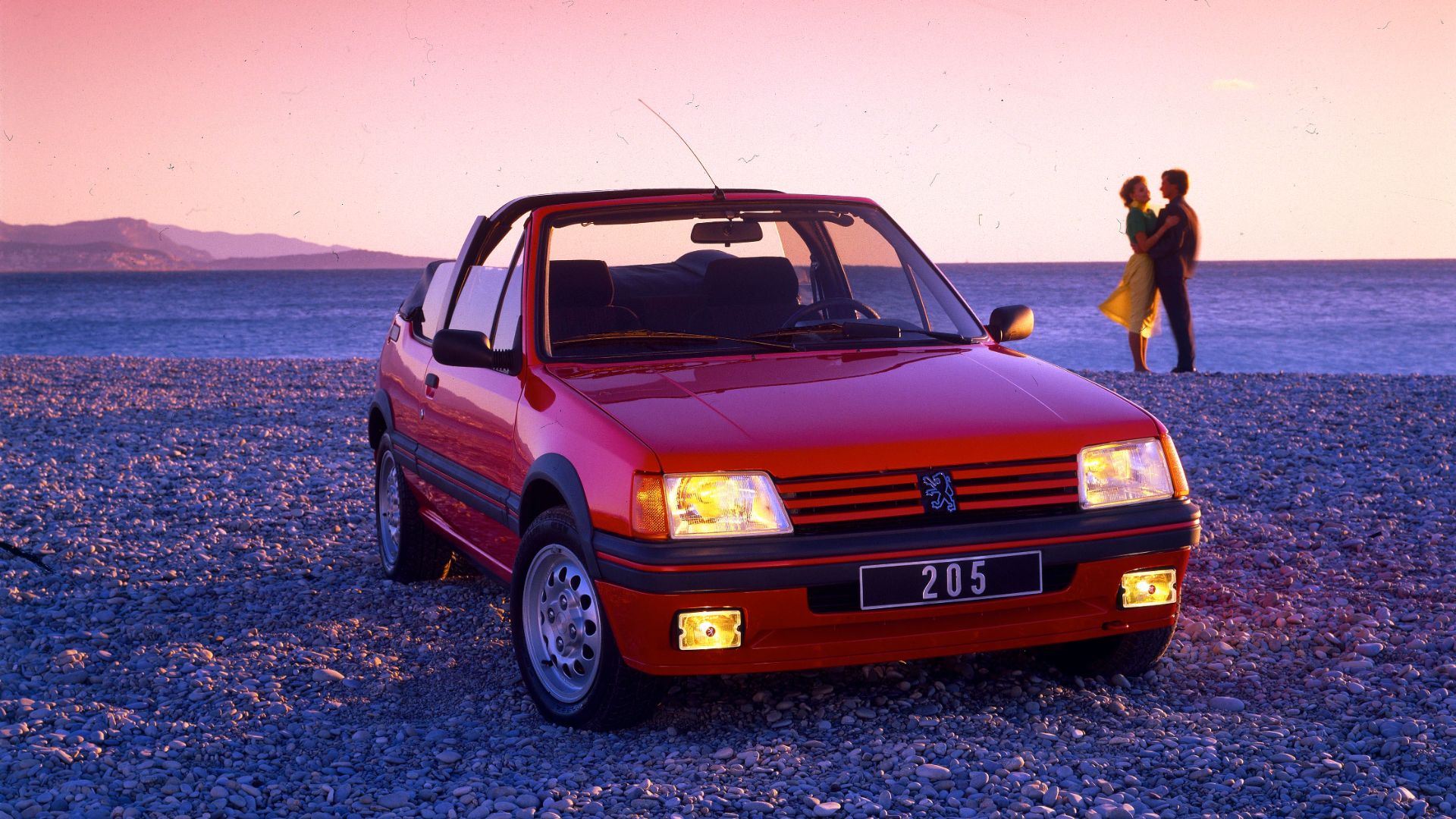
Yellow headlights and Gallic charm
© PeugeotSo, now we’ve wished bon anniversaire to the wonderful Peugeot 205, let’s explore some other brilliant French cars. There’s something for everyone coming up, from rare and exclusive cars for the elite, to popular and affordable vehicles for the masses. And no you haven’t seen the last of trad-French yellow headlights.
-
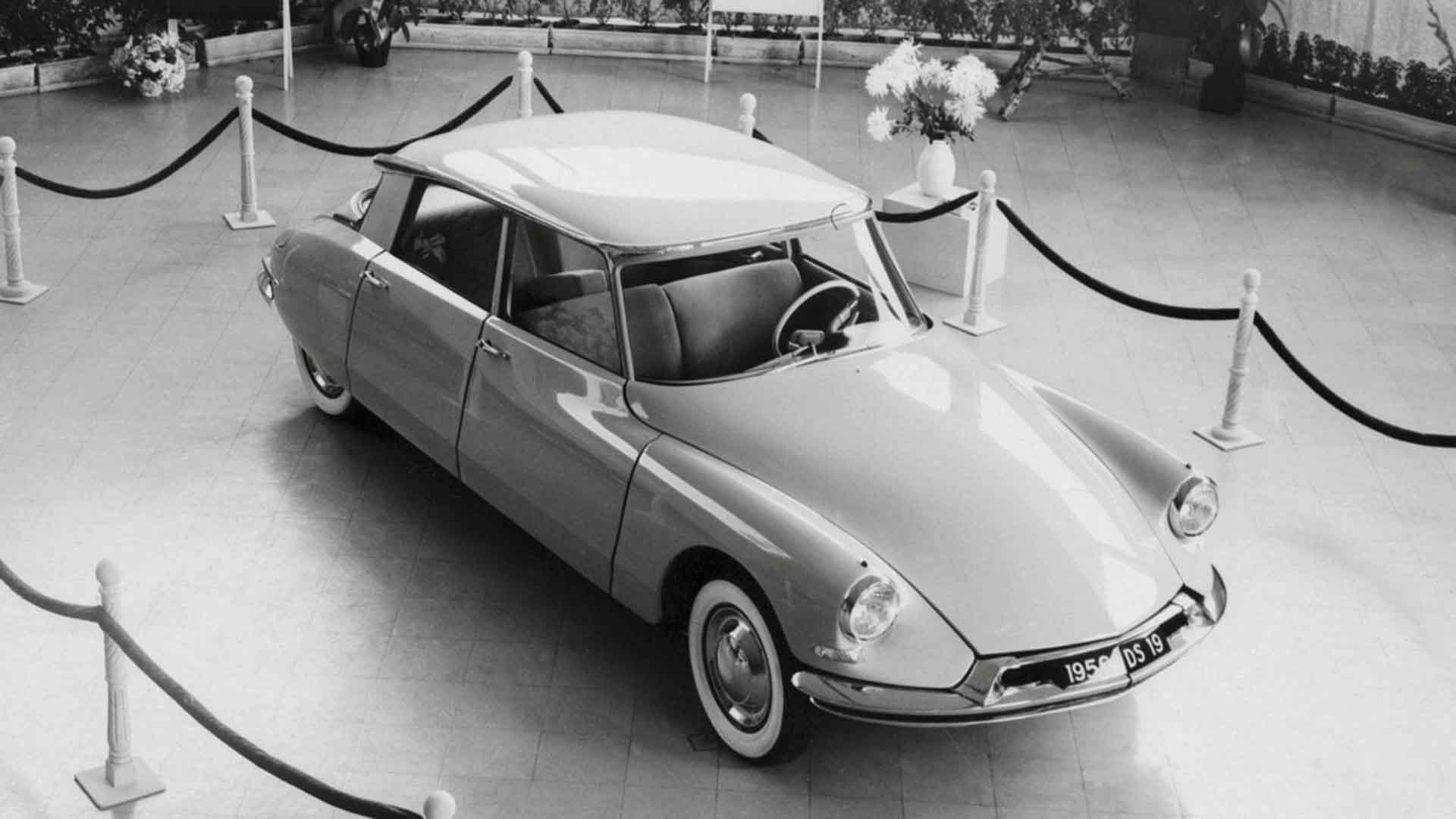
Citroen DS
© CitroenHere’s a very different French automotive masterpiece. The Citroen DS stopped people in their tracks when its covers were pulled off at the Grand Palais des Expositions in 1955. Within minutes of its unveiling, Citroen had received around 700 orders. By the end of the day, that number had increased to 12,000. Technological highlights included hydropneumatic suspension, powered brakes, power steering and even a powered gear selection system. Nearly 1.5 million DS and ID models were eventually sold.
-
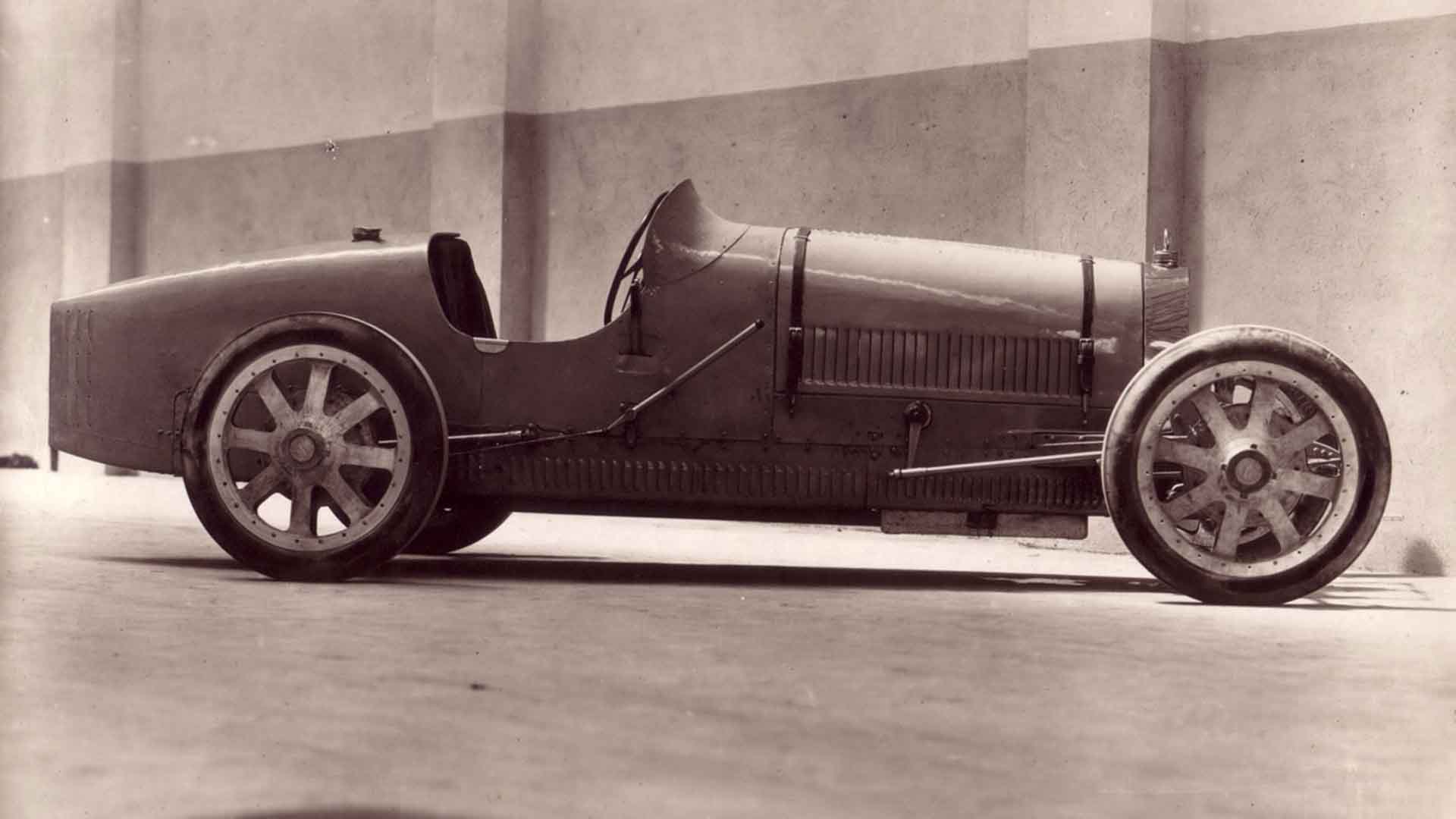
Bugatti Type 35
© BugattiIn truth, we could have filled this entire slideshow with Citroen and Bugatti models. A winner of more than 2,000 victories between 1924 and 1930, the Type 35 is one of the most successful racing cars in history. Some claim that it was the world’s first sports car, and it’s amazing how modern it looks, nearly 100 years after its launch. The alloy wheels help, fitted at a time when wire wheels were the norm. Few cars of the era offered such a jaw-dropping blend of technical innovation and beauty.
-
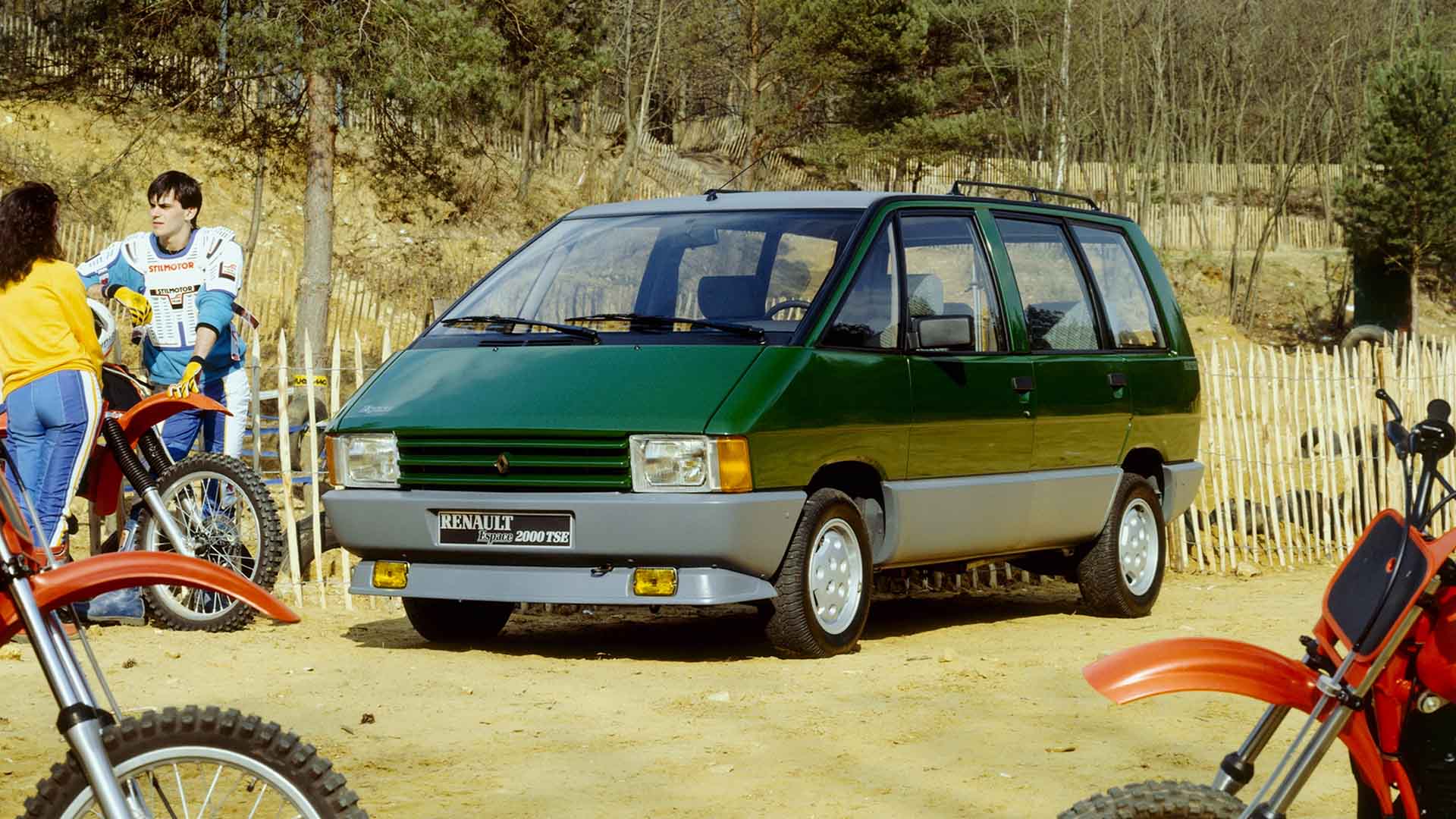
Renault Espace
© RenaultFrom a motorsport hero of the Roaring Twenties to a family car of the 1980s, the Renault Espace has certainly touched the lives of more people than the Type 35. Launched in 1984, the Matra-designed Espace was Europe’s first mass-market people carrier. Until its arrival, European families in search of a seven-seater were restricted to van-based vehicles and estate cars with extra seats. After a slow start, the Renault Espace spawned countless imitators, but it remained the default choice for many MPV buyers.
-
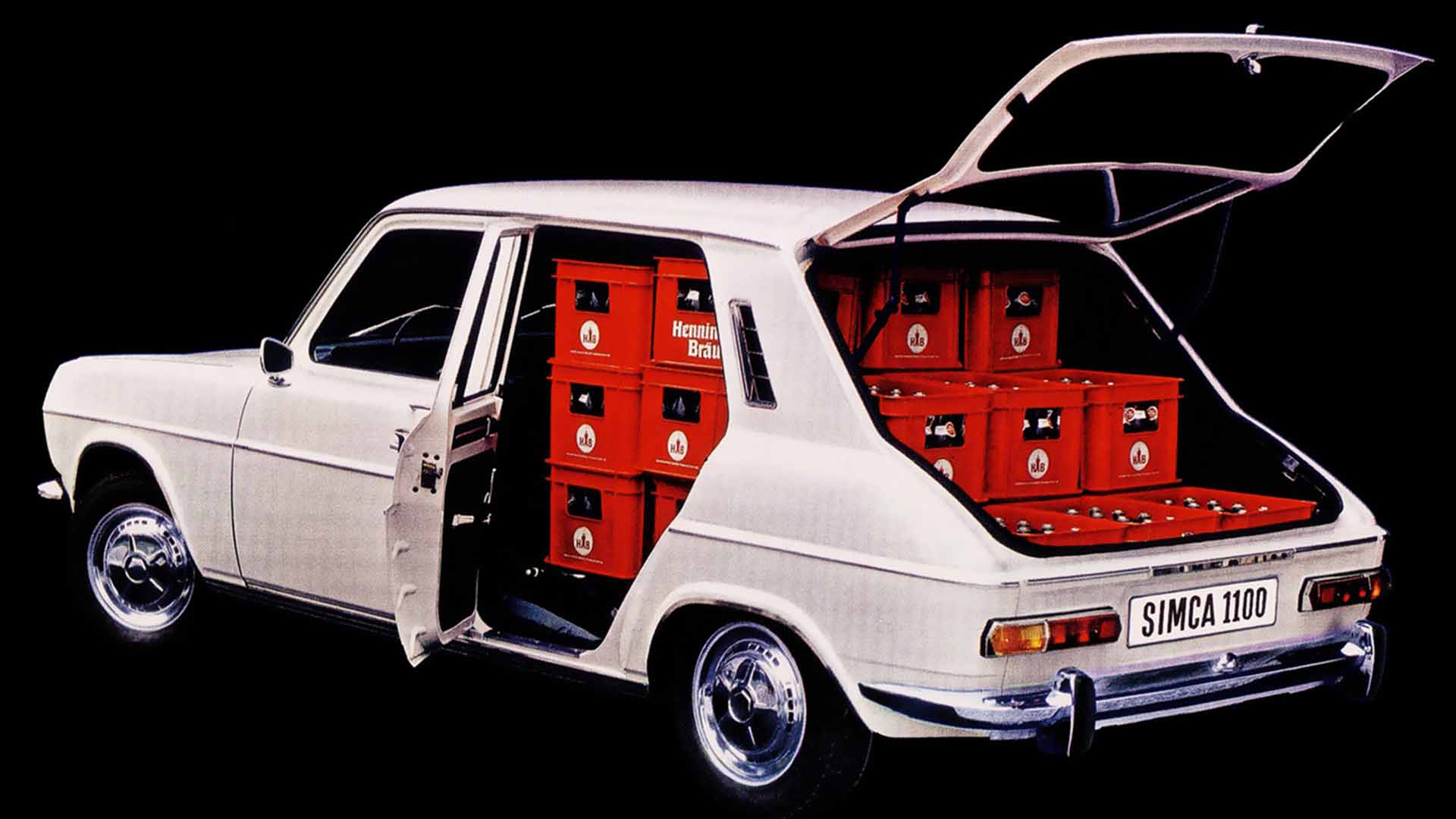
Simca 1100
© SimcaSo often overlooked, the Simca 1100 was a quietly influential French car. Launched in 1967, it was one of the early pioneers of the front-wheel-drive hatchback formula, arriving at a time when most people were driving rear-driven saloons and estates. It also featured fully independent suspension, rack and pinion steering, disc brakes and a transverse-mounted engine. The 1100Ti was one of the first hot hatches, while the 1100 also formed the basis for the Rancho, an early example of what became known as a ‘crossover’.
-
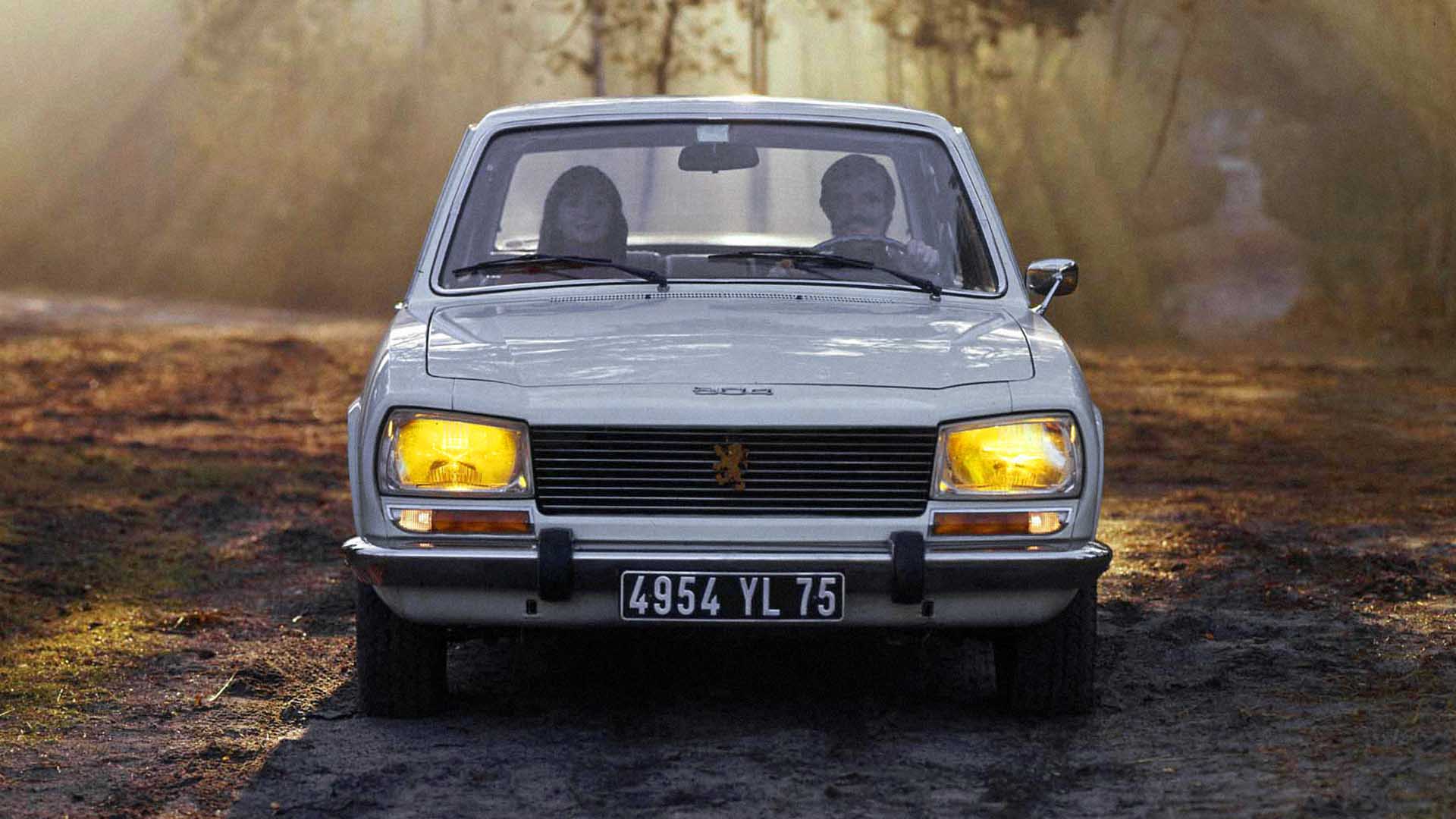
Peugeot 504
© PeugeotThere have been prettier, faster and more technologically advanced Peugeot models, but few cars have enjoyed greater success on the global stage. A deserved winner of the 1969 European Car of the Year award, the tough 504 spawned achingly gorgeous coupe and cabriolet versions, along with the supremely practical 504 estate and pick-up. Production continued until 1983, by which time more than three million had been built. Rare in the UK, the Peugeot 504 is still a common sight in parts of Africa.
-
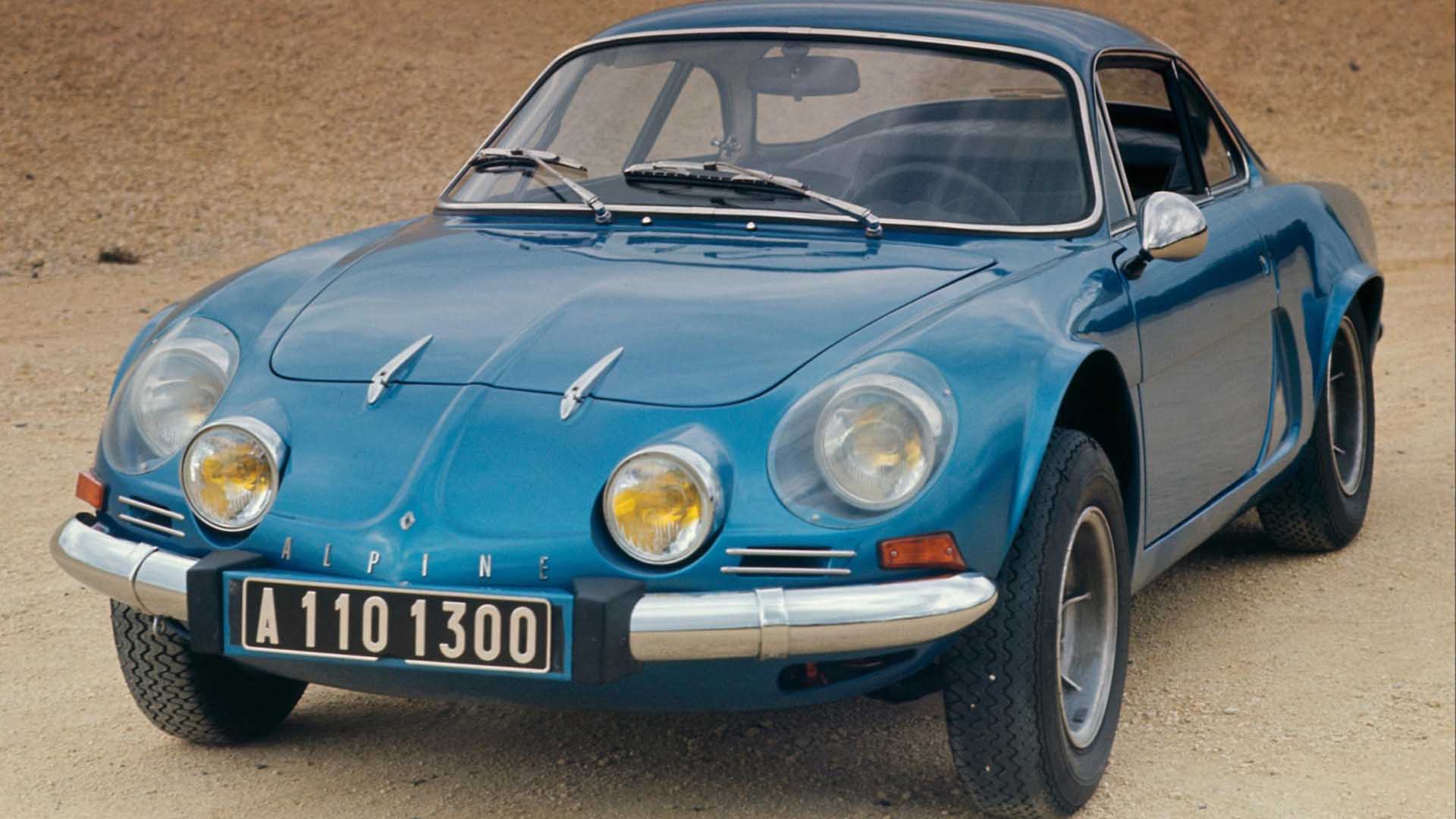
Alpine A110
© AlpineThe Alpine A110 used the underpinnings of the Renault 8 to devastating effect, winning numerous events in the 1960s and 1970s. This included a historic 1-2-3 at the 1971 Monte Carlo Rally and winning the 1973 World Rally Championship. Early cars were powered by a 1,108cc engine, but this grew to 1,255cc, then 1,565cc, 1,605cc, and, finally, 1,647cc. Other Alpine models followed, but none could replicate the success of the original A110.
-
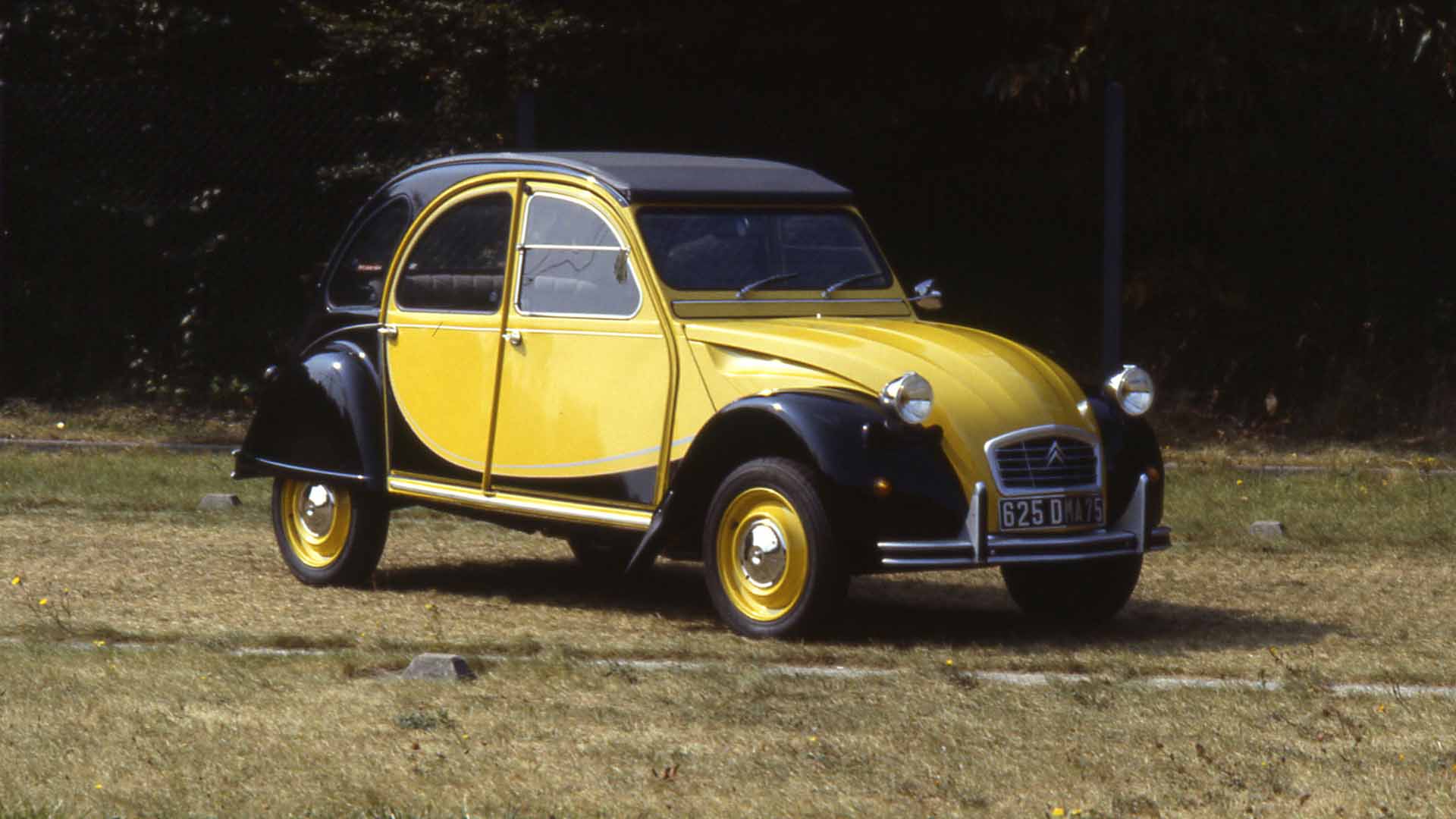
Citroen 2CV
© CitroenProduction of the 2CV was authorised in 1938, but the outbreak of World War Two meant that research and development continued in secret, giving Citroen time to perfect its design. The finished car was unveiled in Paris in 1948, and it’s fair to say that the reception was, at best, mixed. Dealers demanded a vehicle with more showroom appeal, while some reviewers slammed its utilitarian design. A production run of 5,114,940 cars over 52 years suggests that Citroen was right to hold firm.
-
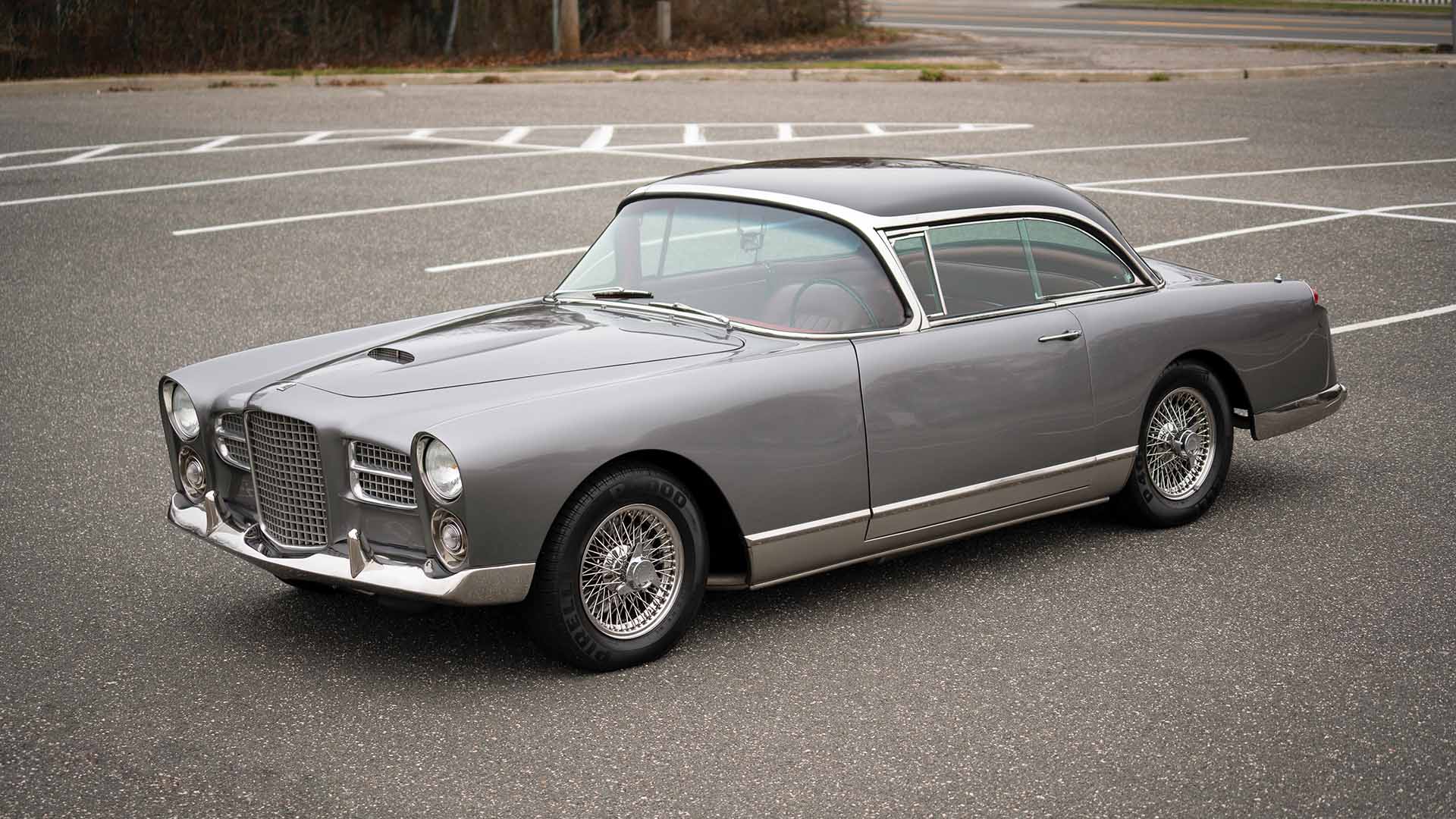
Facel Vega HK500
© Erik Fuller 2019 Courtesy of RM Sotheby’sAt the time of its launch in 1959, this French-American beauty was the fastest four-seat coupe in the world. Just 490 examples of the Facel Vega HK500 were built, each one powered by a Chrysler 5.9-litre V8 producing a claimed 335hp. French elegance, American muscle and an ability to cruise at 100mph on the way to your fancy apartment, off the Boulevard Saint-Michel. The song came a decade after the launch of the HK500, but it’s an image we like.
-
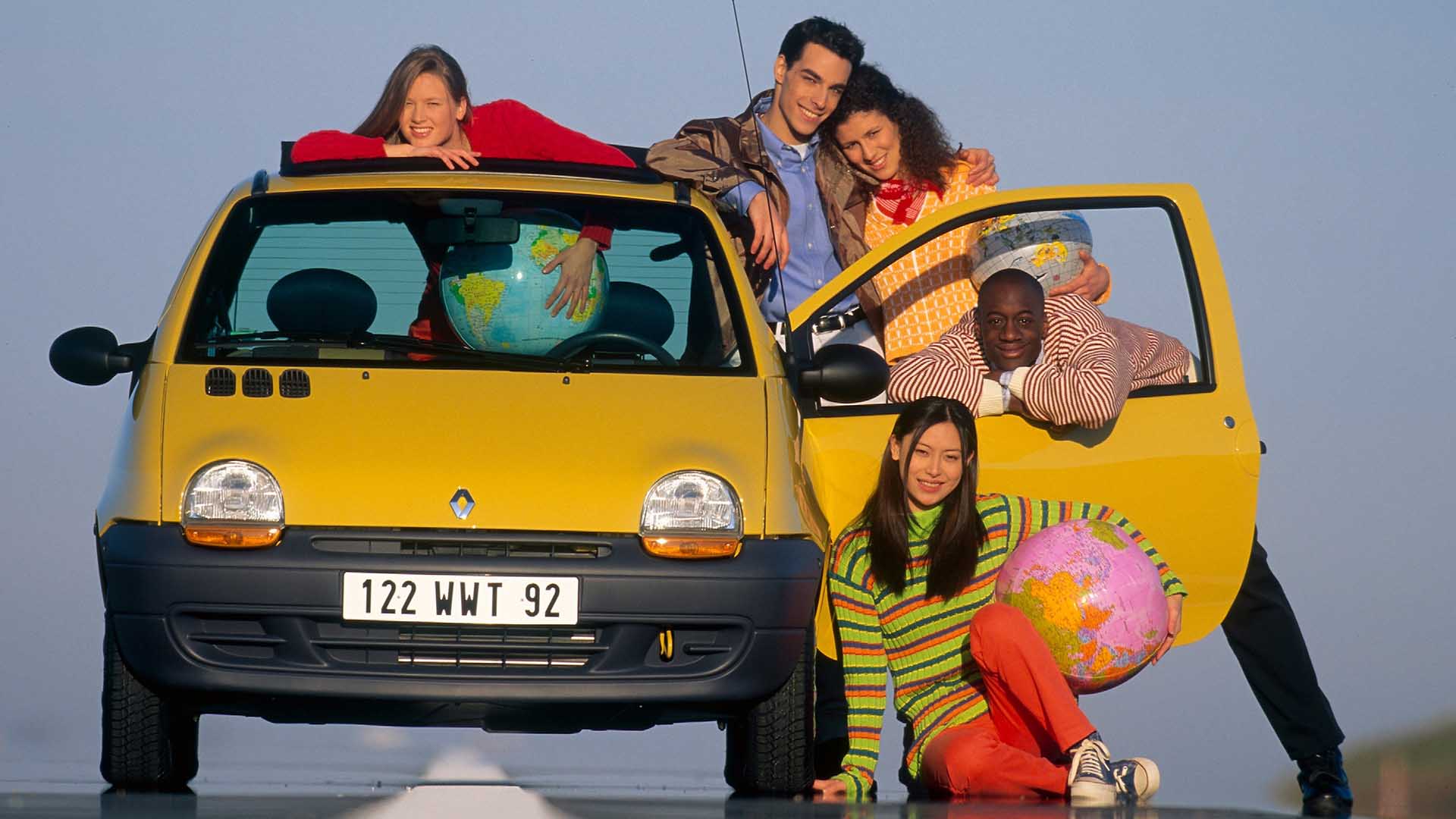
Renault Twingo
© RenaultSpace is the ultimate luxury in a small car, so designer Patrick le Quement deserves a huge amount of respect for the original Renault Twingo. The monobox design was inspired by the Espace, with a sliding rear bench used to strike a balance between cabin space and practicality. At launch, there were just two options: air conditioning and a folding canvas roof. It still hurts that UK buyers were denied the opportunity to buy a Mk1 Twingo with the steering wheel on the right.
-
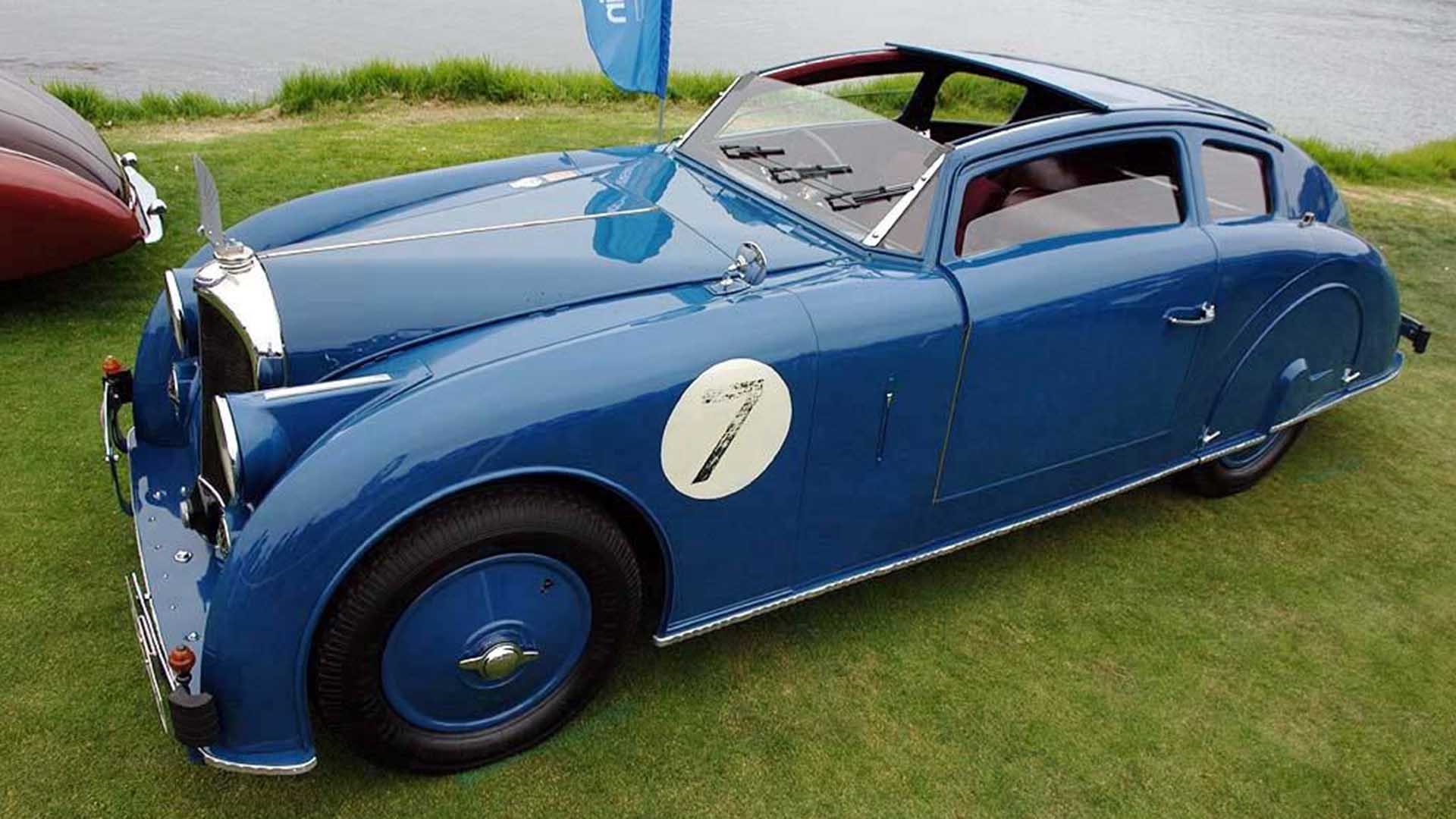
Avions Voisin C28 Aerosport
© Creative CommonsAvions Voisin built some of the most lavish and extravagant cars of the pre-war era. The company was founded by aviation pioneer Gabriel B. Voisin, who directed his attention to car manufacturing after the First World War transformed him into a pacifist. Unveiled at the 1935 Paris Auto Salon, the C28 Aerosport was Gabriel Voisin’s final car. Highlights include an aluminium monocoque body, a 3.3-litre ‘Silent Knight’ engine and a refined cruising speed of 90mph.
-
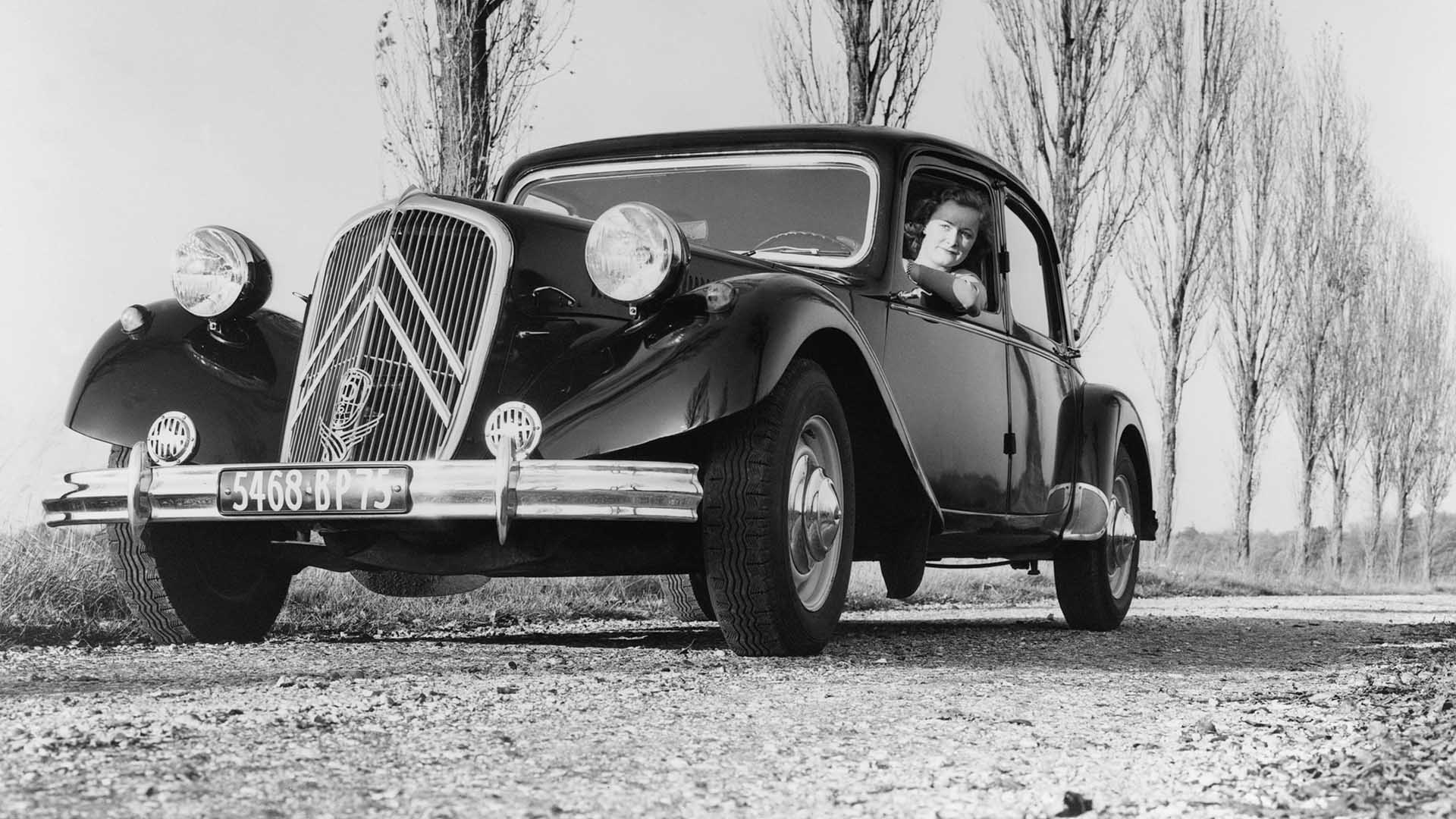
Citroen Traction Avant
© CitroenIf the Citroen DS is the ‘goddess’ (déesse in French), the Traction Avant is the ‘godmother’ of the modern motor car. Launched in 1934 as the 7A, the Traction Avant featured front-wheel drive, a welded steel monocoque body and independent suspension. It was also the first Citroen to feature hydropneumatic suspension, which arrived on the 15H model of 1954.
-
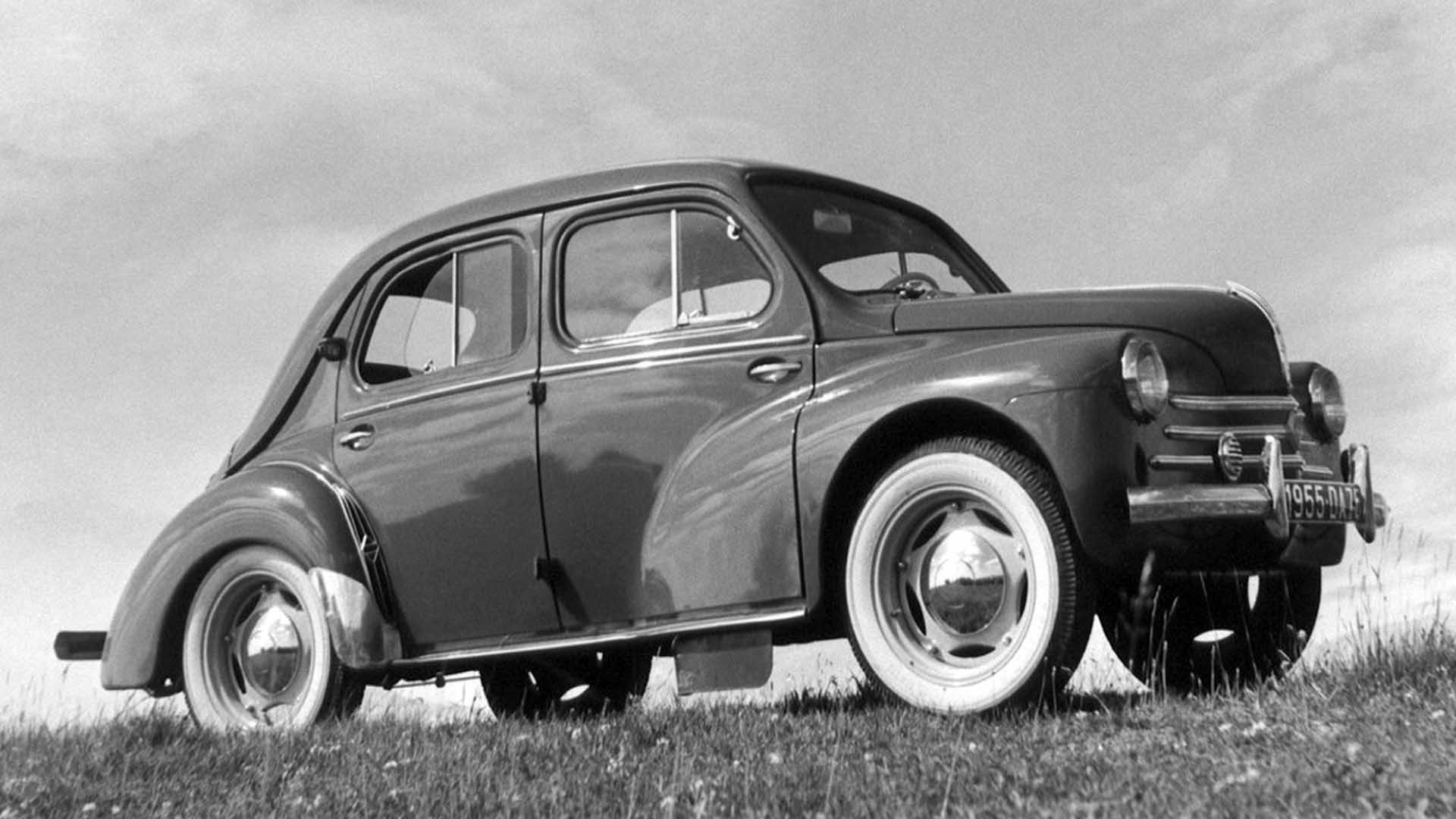
Renault 4CV
© RenaultLike the Citroen 2CV, the Renault 4CV was developed in secret during World War Two, so it’s no coincidence that it ended up looking a little like a certain Volkswagen. It arrived in 1947, sporting the same rear-engined layout as the VW, but going one better by offering four doors. For the people of France, the 4CV was a symbol of freedom, helping it to achieve sales of around 1.1 million.
-
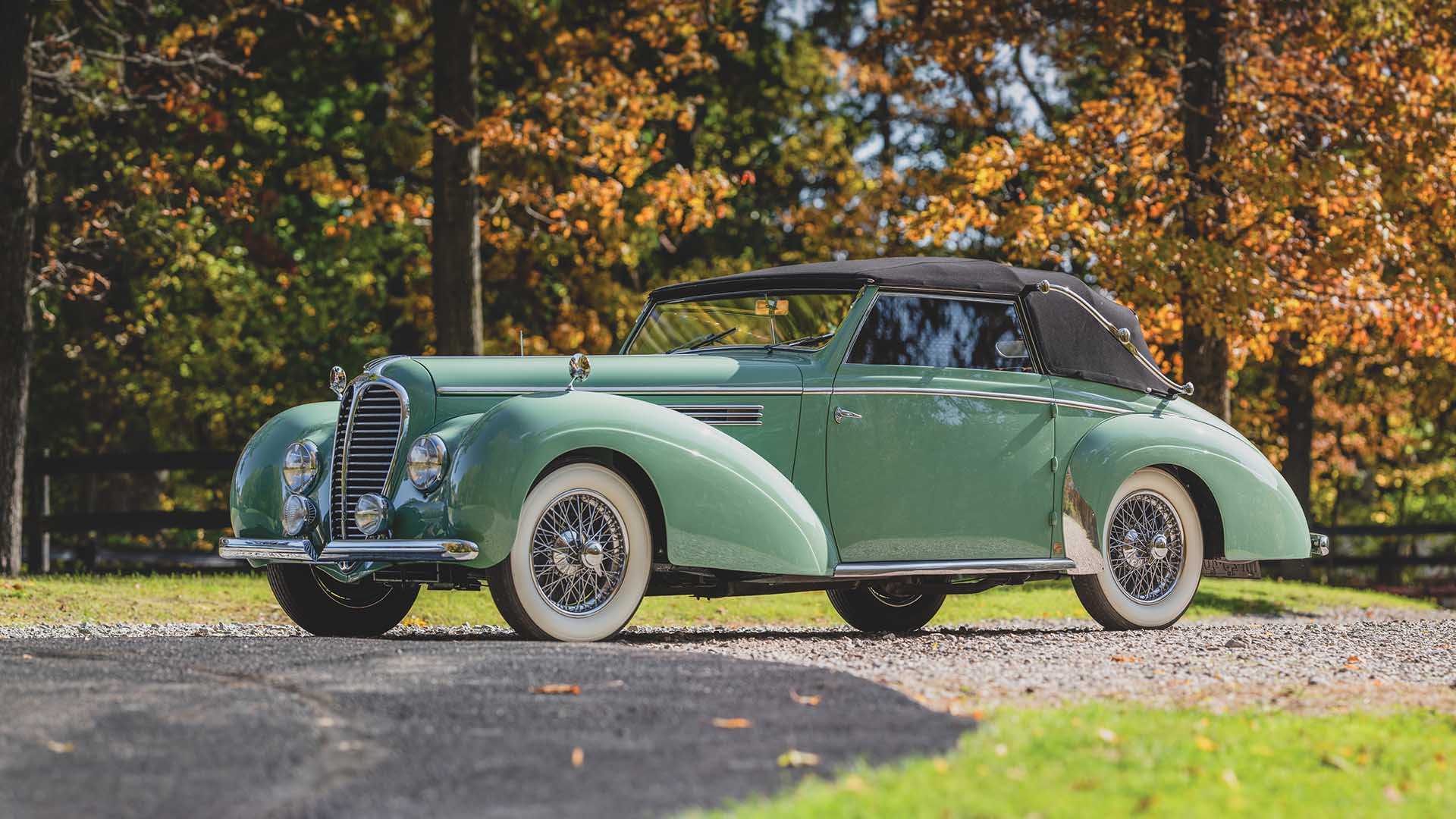
Delahaye 135M
© Darin Schnabel 2020 Courtesy of RM Sotheby’sDelahaye unveiled the elegant 135 in 1935, before launching the more sporting 135M variant a year later. It proved to be a formidable race car, taking the top six places in Marseille in 1936, second overall at Le Mans in 1937, and first, second and fourth the following year. The Delahaye 135M also won the Rallye Monte Carlo in 1937 and 1939. The 1948 135M Cabriolet by Chapron sold at an RM Sotheby’s auction in 2020 for $240,800 (£200,000).
-
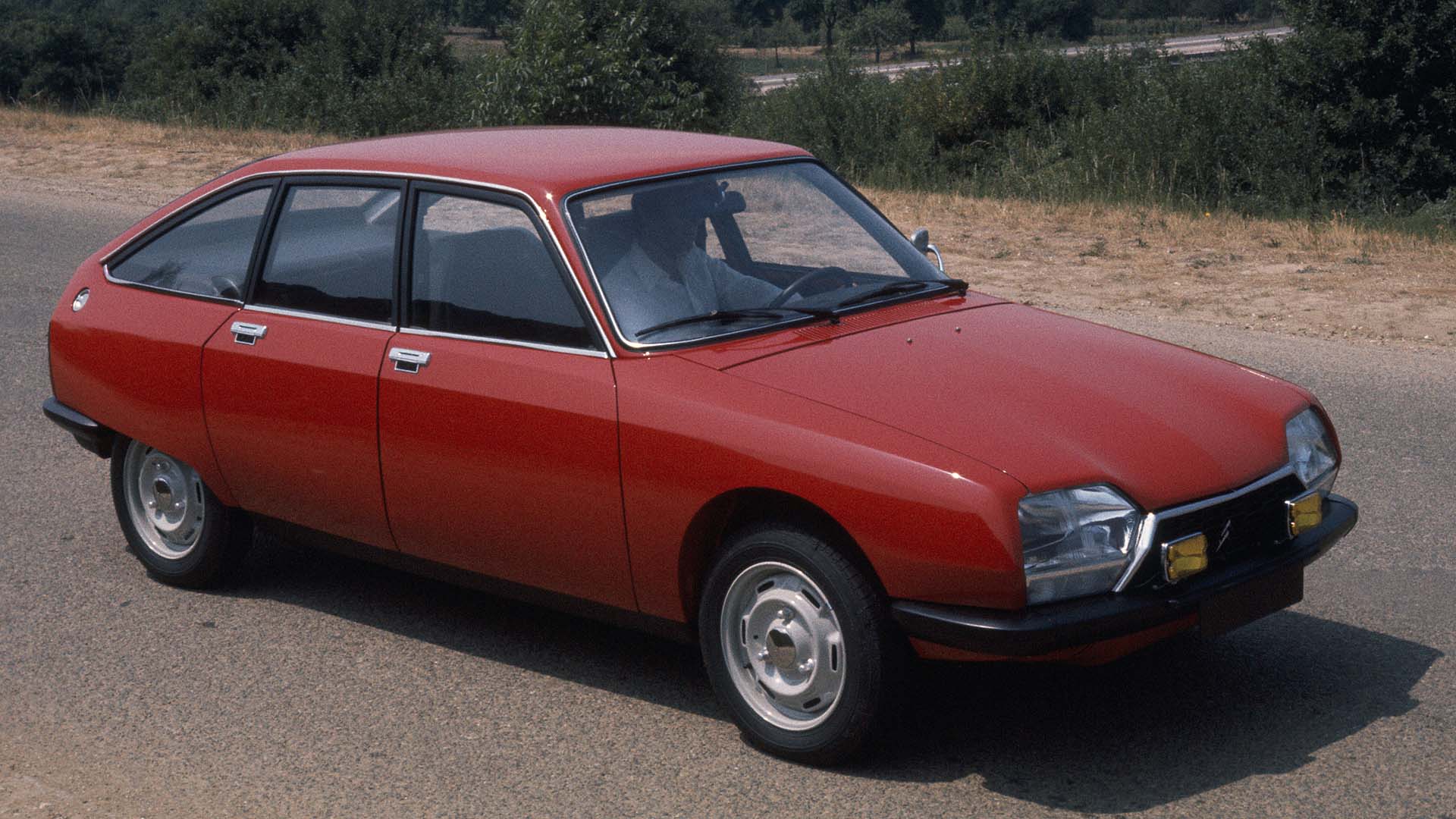
Citroen GS
© CitroenIt’s 52 years since the Citroen GS scooped the European Car of the Year award, knocking the Volkswagen K70 and Citroen SM into second and third places. Spoiler alert: the SM doesn’t make our list, but the GS does. Why? Because it delivered the technological innovation and ride comfort of the DS to the masses. Still criminally underrated beyond enthusiast circles, the Citroen GS was a hugely significant car. The later GSA added the practicality of a hatchback boot.
-
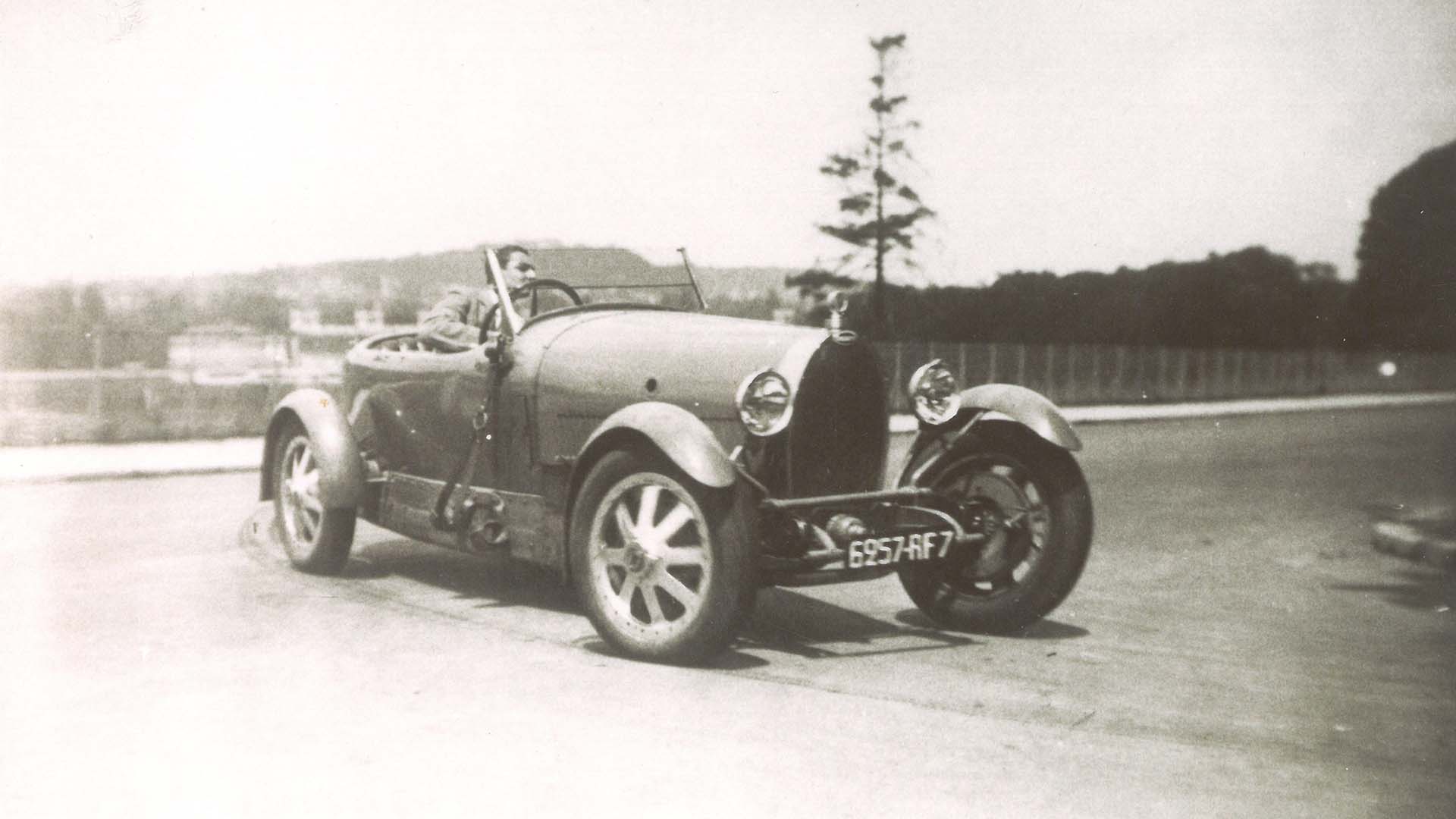
Bugatti Type 43
© BonhamsAt its launch in 1927, the Bugatti Type 43 was reportedly the world’s first 100mph car. It could actually go even faster (it was rare for a car to reach 60mph in the 1920s) – and sprint to 60mph in 12 seconds. Power was sourced from a supercharged eight-cylinder engine producing 120hp. A supercar in all but name.
-
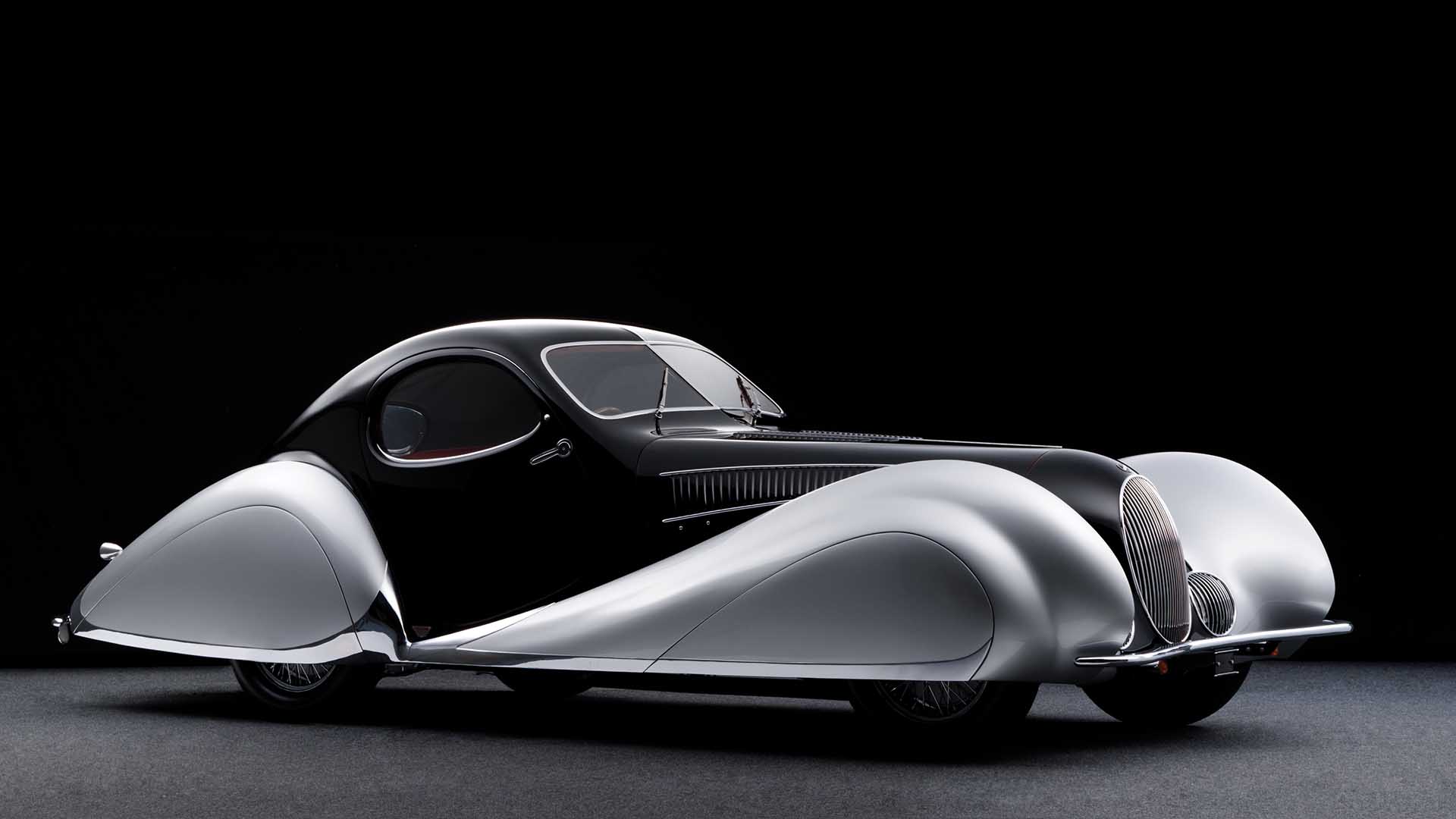
Talbot-Lago T150-C SS Goutte d’Eau
© Fotohalle Unger 2017 Courtesy of RM Sotheby’sWith Austrian Anthony Lago at the helm, Talbot-Lago emerged from the collapse of Sunbeam-Talbot-Darracq. Lago’s obsession with beating the wind resulted in the creation of some of the beautiful cars of the era. The T26 Grand Sport is arguably the most elegant, although the T150-C SS ‘Goutte d’Eau’ (Teardrop) edges it in terms of theatre. This 1937 example, which is one of two, sold at auction for €3,360,000 (£2,960,000).
-
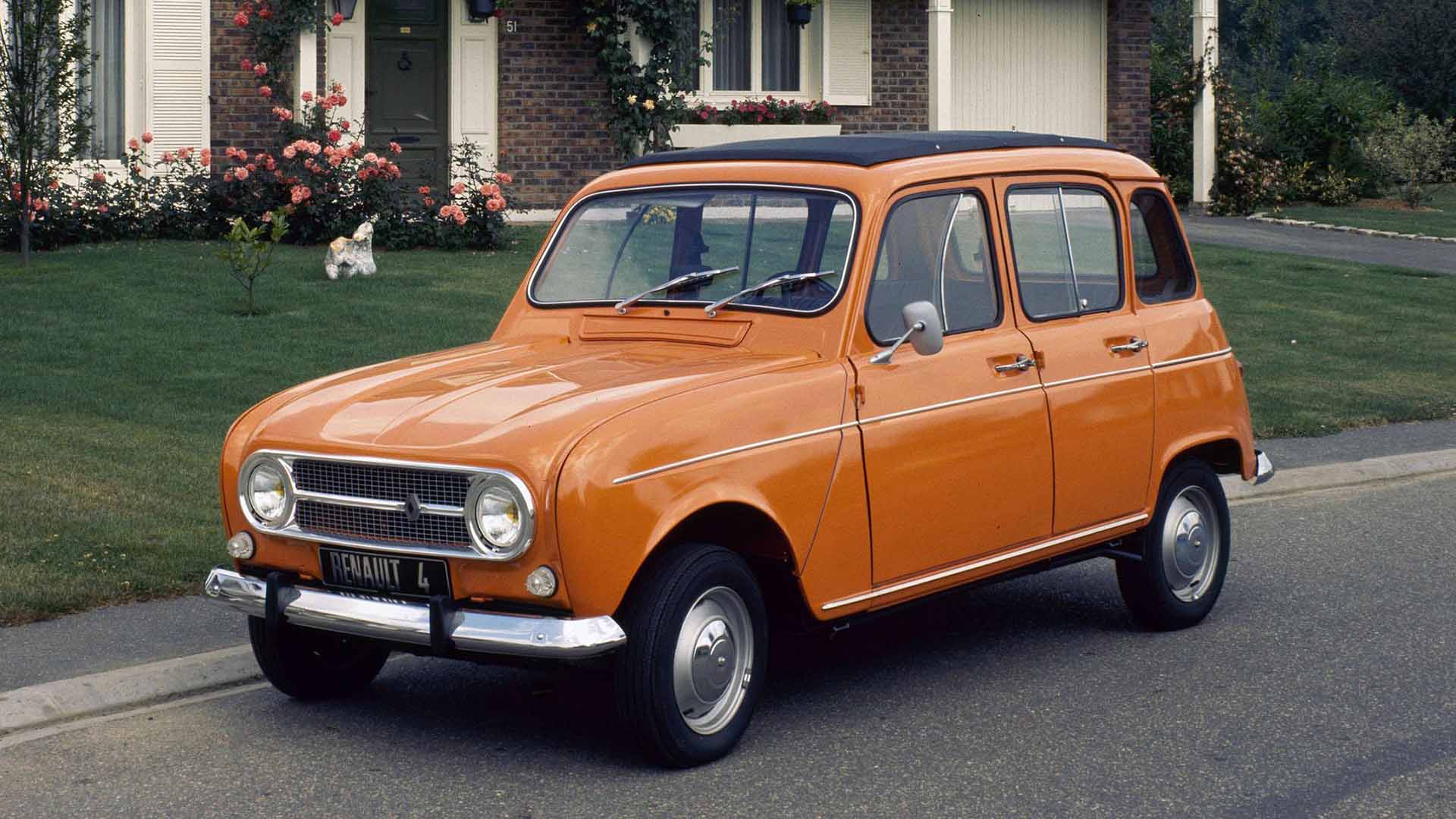
Renault 4
© RenaultCitroen fans look away, because the Renault 4 was actually superior to the 2CV. More than eight million were sold, making it the most successful French car of all time. It’s actually the third best-selling car no longer in production, after the Volkswagen Beetle and Ford Model T. Renault’s first front-wheel-drive car featured a large tailgate, giving the dual benefits of an estate car and a hatchback.
-
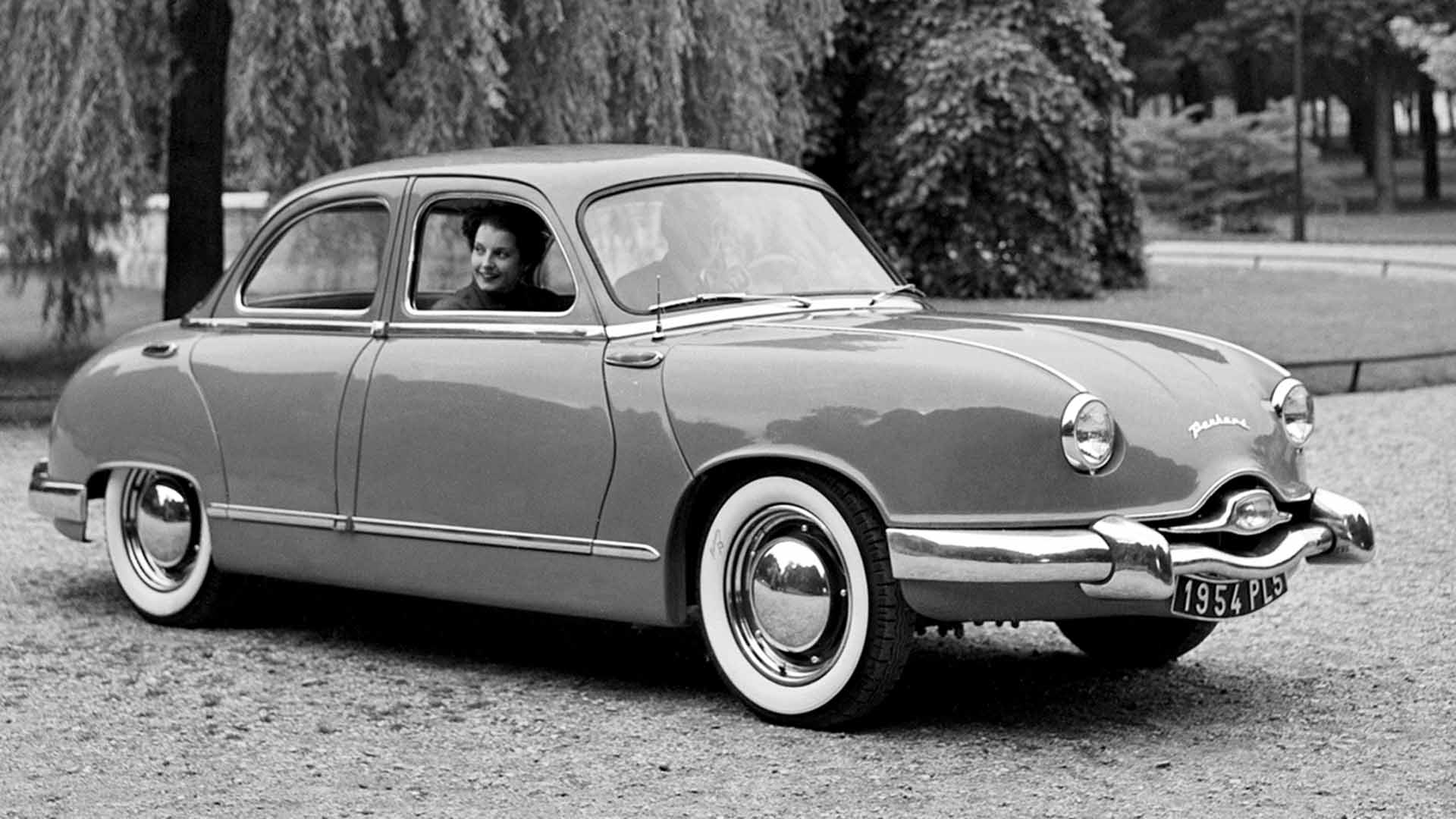
Panhard Dyna Z
© PanhardIn its day, Panhard was as innovative and forward thinking as Citroen. Lead designer Louis Bionier was an expert in aerodynamics, and he put all of his efforts into the design of the Panhard Dyna Z. This was the world’s first mass-produced aluminium-bodied saloon car, with a drag coefficient of just 0.28. For context, the Vauxhall Calibra had a drag coefficient of 0.26.
-
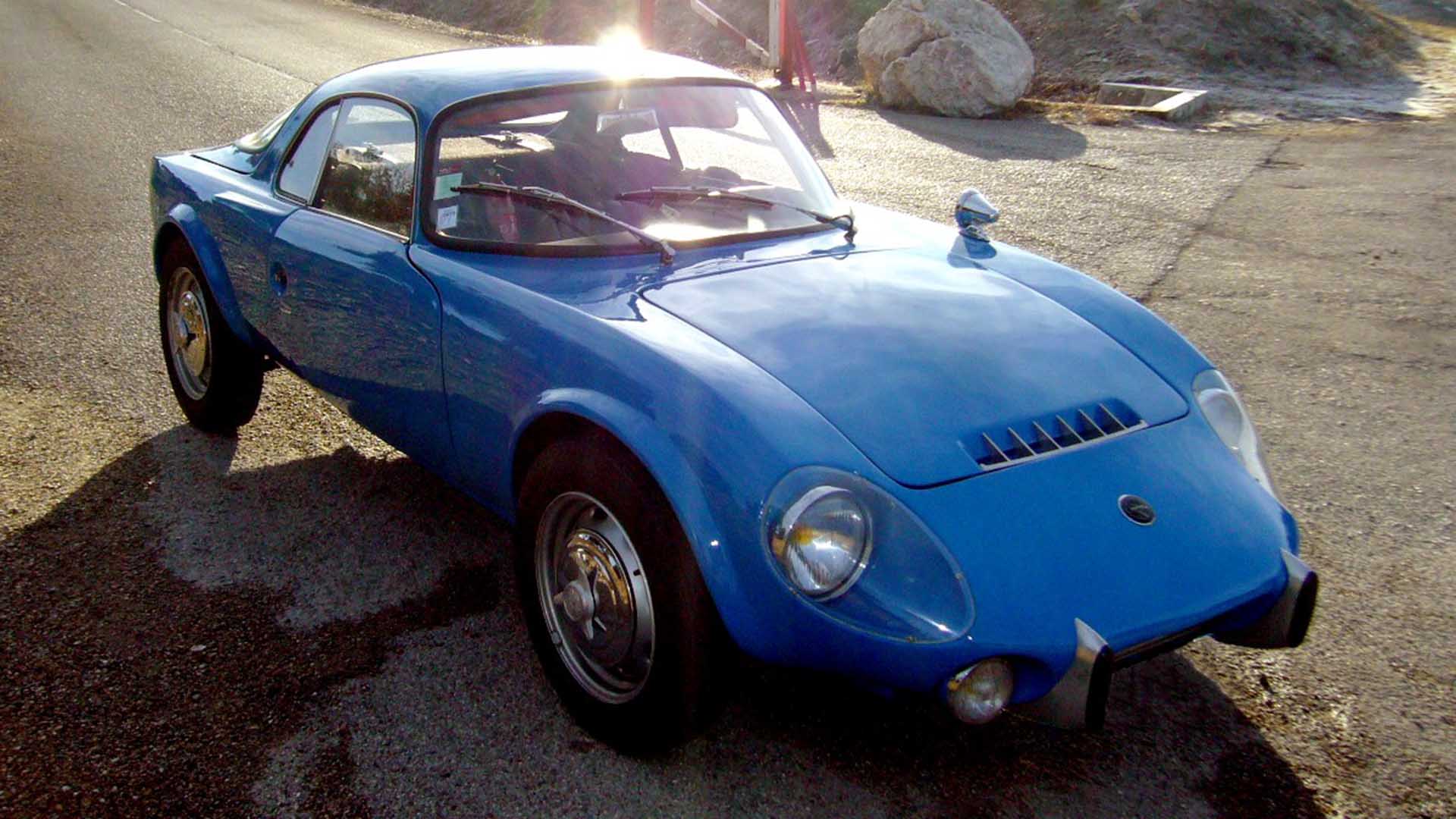
Matra Djet
© Gtb2 and WikipediaIt still pains us that we’ve had to exclude the Matra Rancho from the list, but we’ll make amends by including the Djet. Originally sold under the Automobiles Rene Bonnet nameplate, this was the world’s first mass-produced mid-engined sports car, hitting the market in 1962, before the likes of Lamborghini and Ferrari joined the party. One of the 1,500 or so cars built was gifted to the Soviet cosmonaut Yuri Gagarin.
-
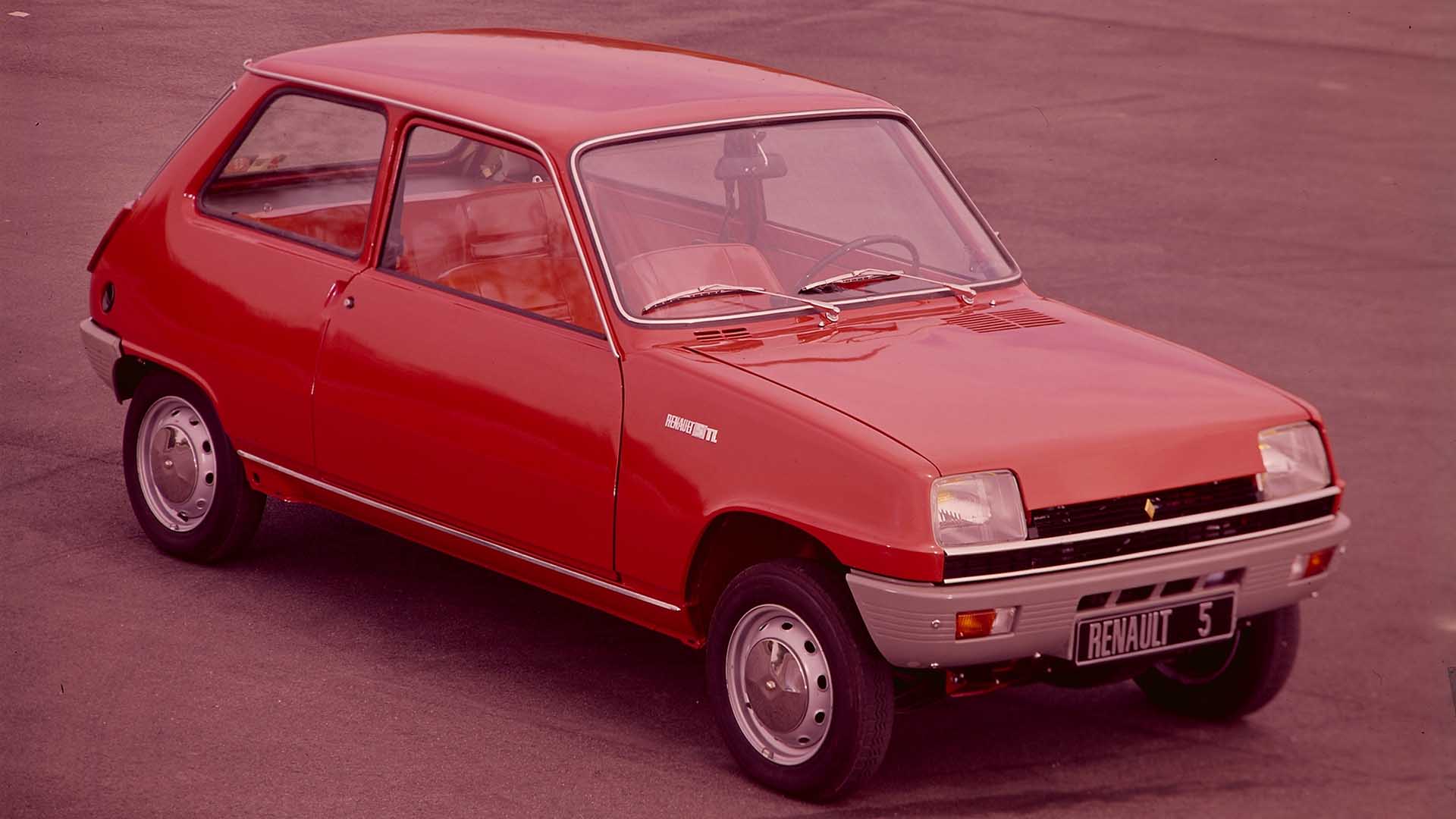
Renault 5
© RenaultPierre Dreyfus’ brief to his engineers was as simple as it was broad. He demanded a “voiture a vivre – a car for all seasons, for holidays and for work, for weekdays, for town and for country”. He could have added B-road enjoyment and motorsport success to the list, but that would have been greedy. Production of the original Renault 5 continued from 1972 until 1984, when it was replaced by the Super 5.
-
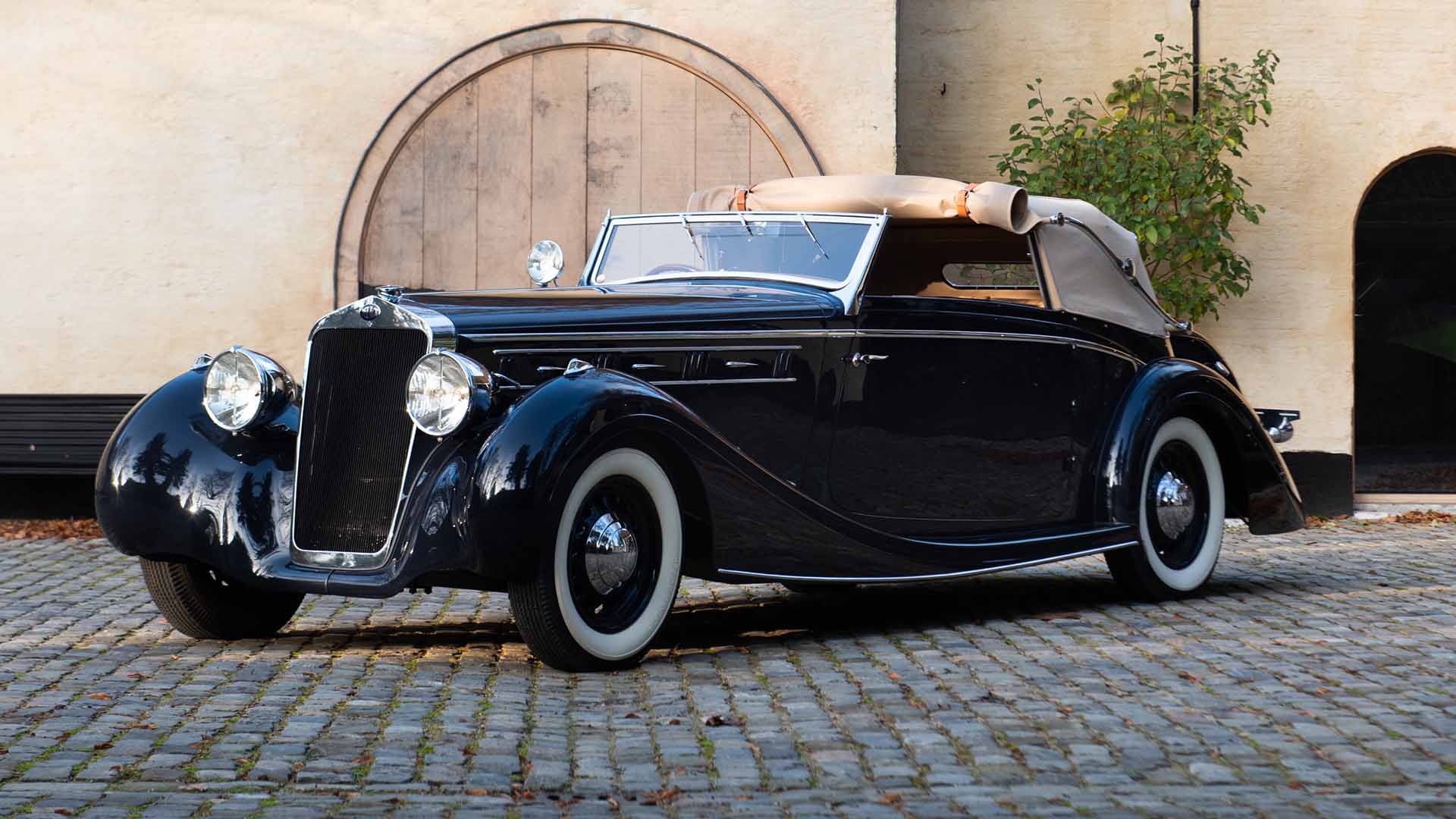
Delage D8
© BonhamsDelage was a manufacturer of luxury and race cars founded by Louis Delage in 1905. The D8 eight-cylinder developed by Maurice Gaultier is widely considered to be the company’s best engine, making this the pinnacle of all Delage models. It was one of the most desirable and exhilarating cars of the era, although few could afford the extravagant price tag. The model shown is a Delage D8 120 with coachwork by Chapron.
-
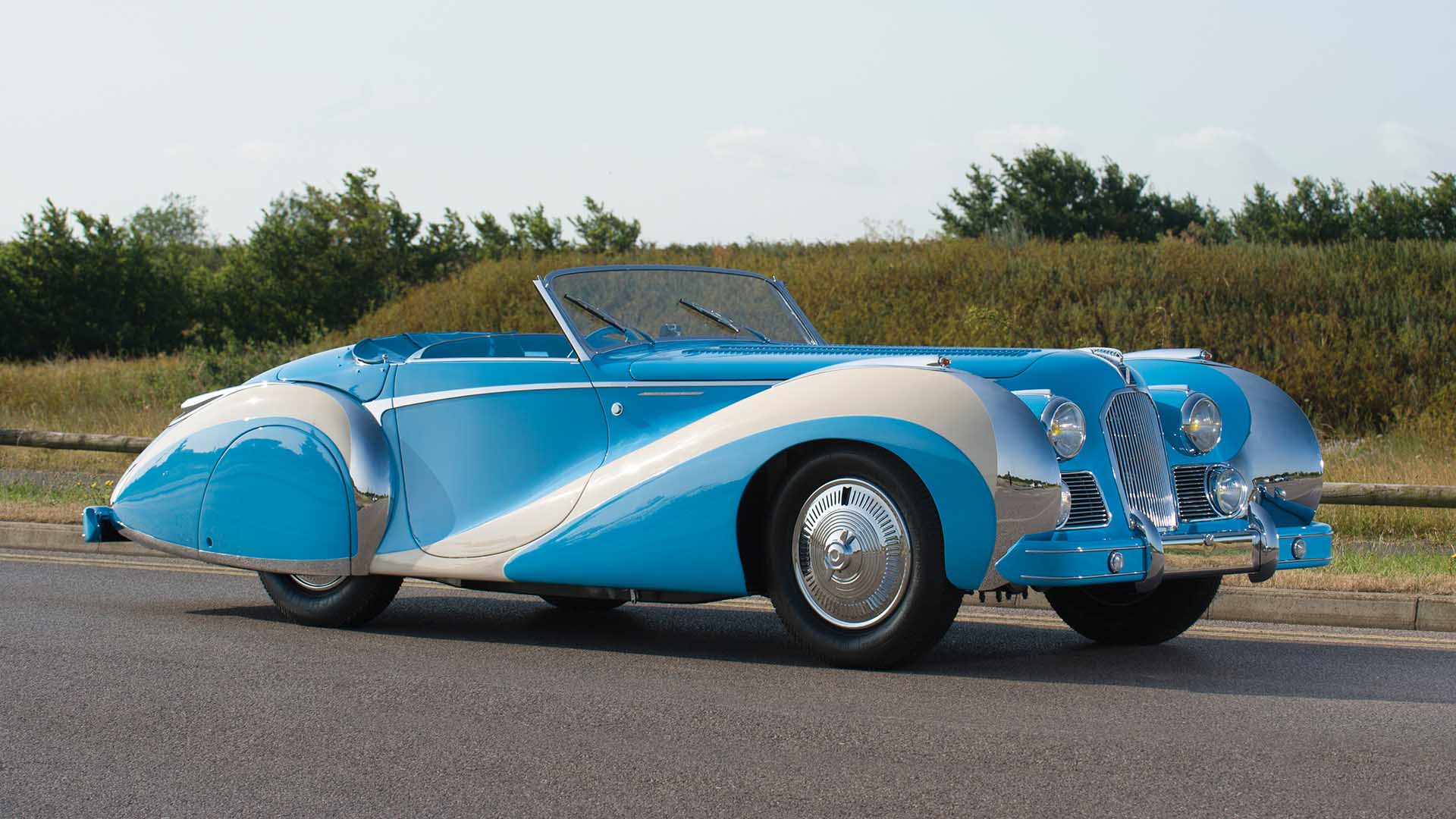
Talbot-Lago T26 Grand Sport
© Tom Wood 2015 Courtesy of RM Sotheby’sThe second Talbot-Lago on the list is a direct descendant of the T150-C SS ‘Teardrop’. These were cars built for high society. Price tags were an irrelevance; practicality was something for other people to worry about. It was all about looking good and ensuring that everybody noticed you. Only 29 were built on the short-wheelbase chassis, making this 1948 Cabriolet in the style of Saoutchik extremely rare. Originally a Geneva show car, it was acquired by the New York furrier Louis Ritter.
-
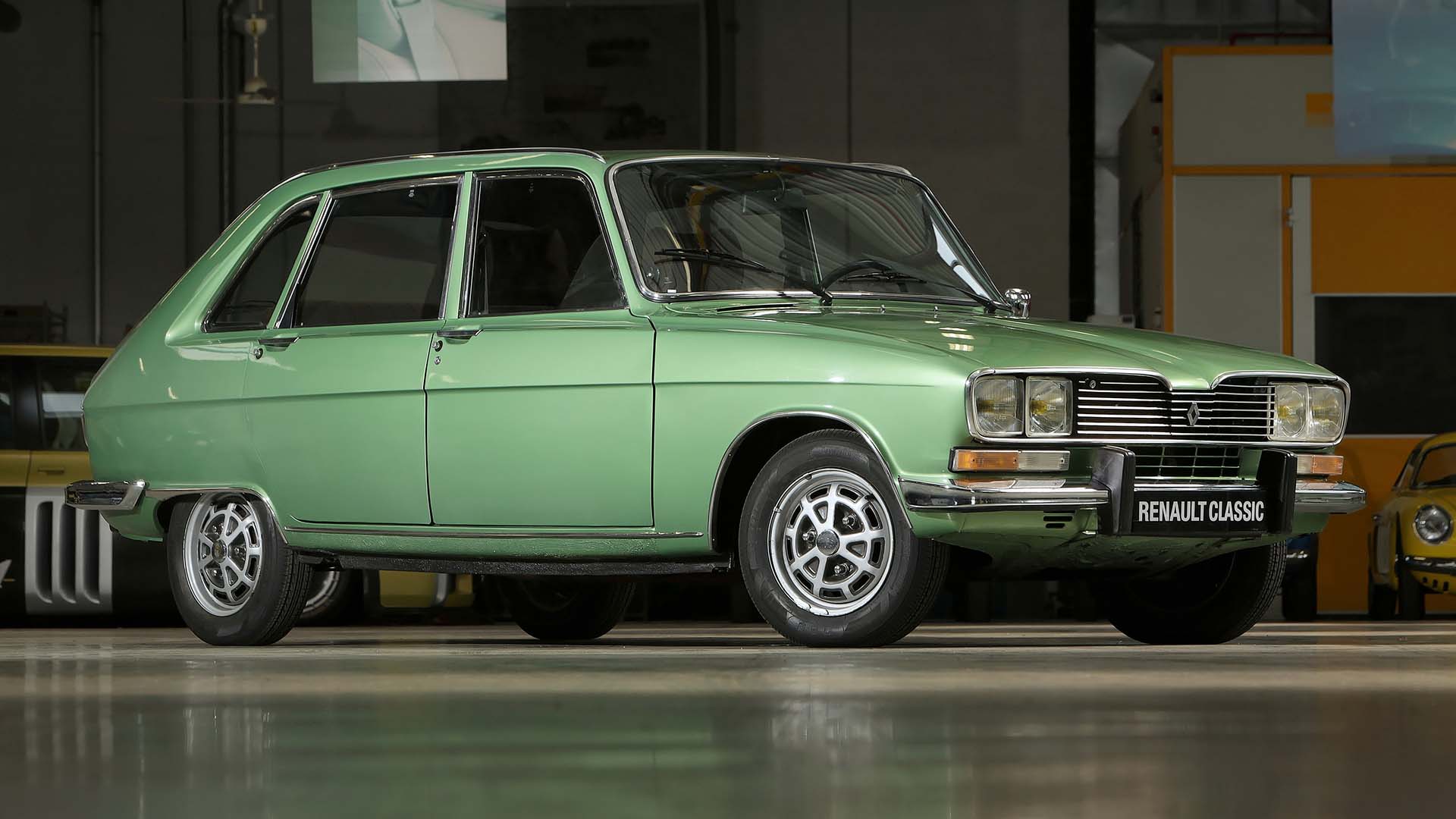
Renault 16
© RenaultIt’s not as flamboyant or exclusive as Talbot-Lago, Delage or Delahaye, but the Renault 16’s impact on the world is no less significant. It helped to popularise the concept of a front-wheel-drive hatchback, along with the famed balance of ride and handling we expected from a French car. The 16TX should be regarded as one of the world’s first hot hatches.
-
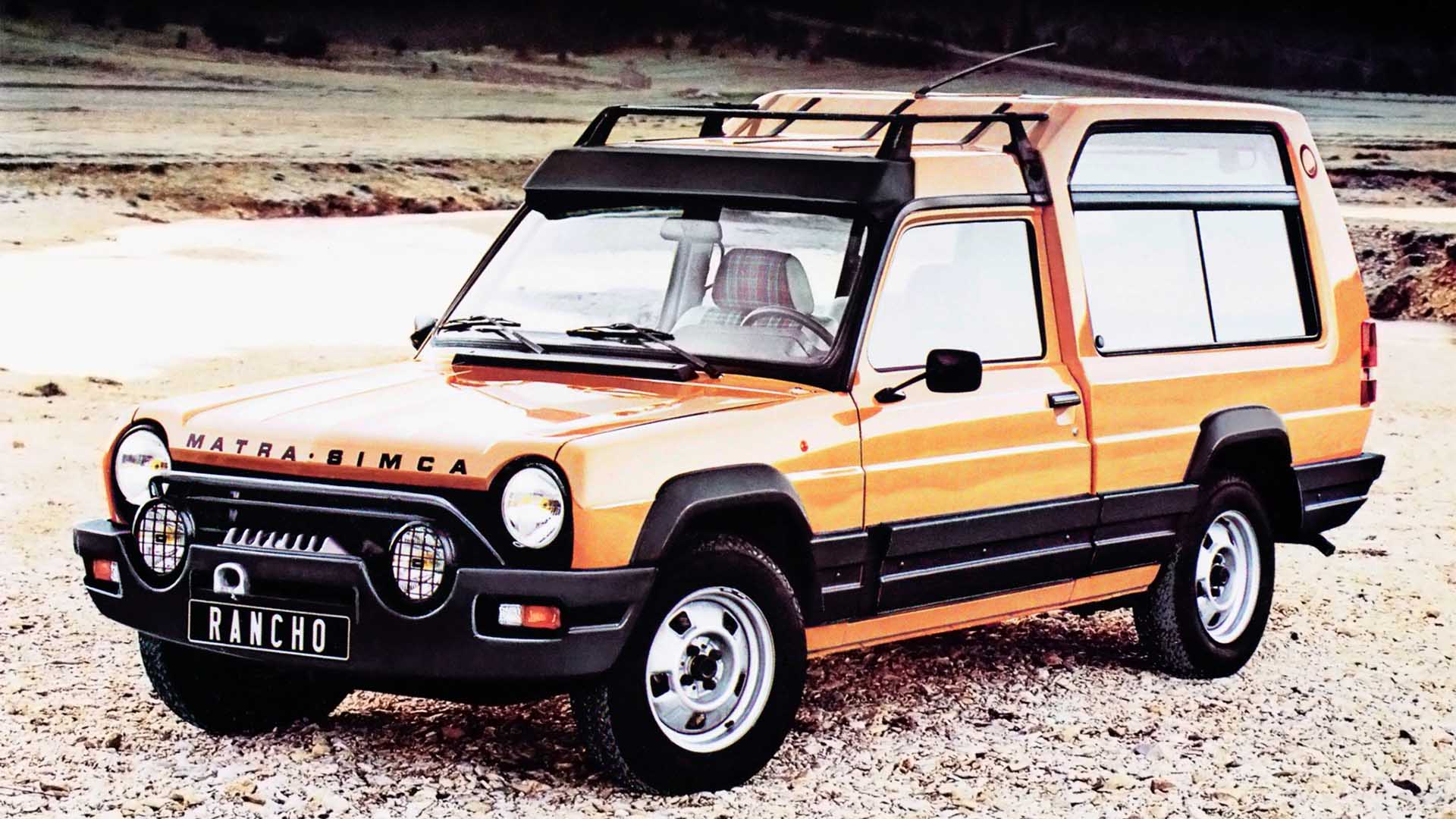
Matra Rancho
© MatraDid you really think we were going to leave it out? Here it is, in all its glory: the magnificent and masterful Matra Rancho. Magnifique, non?